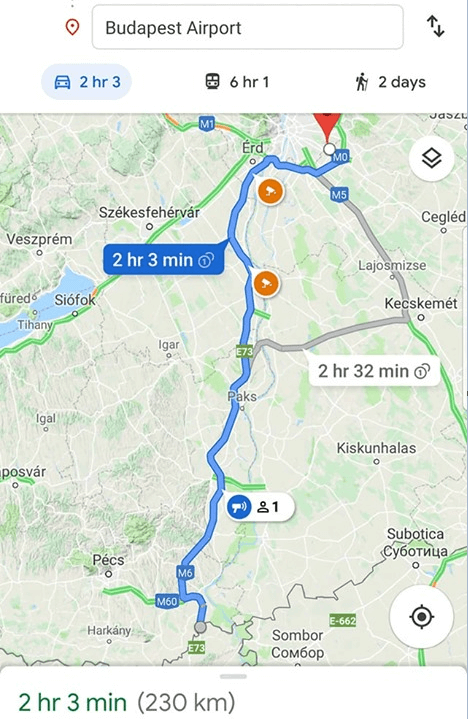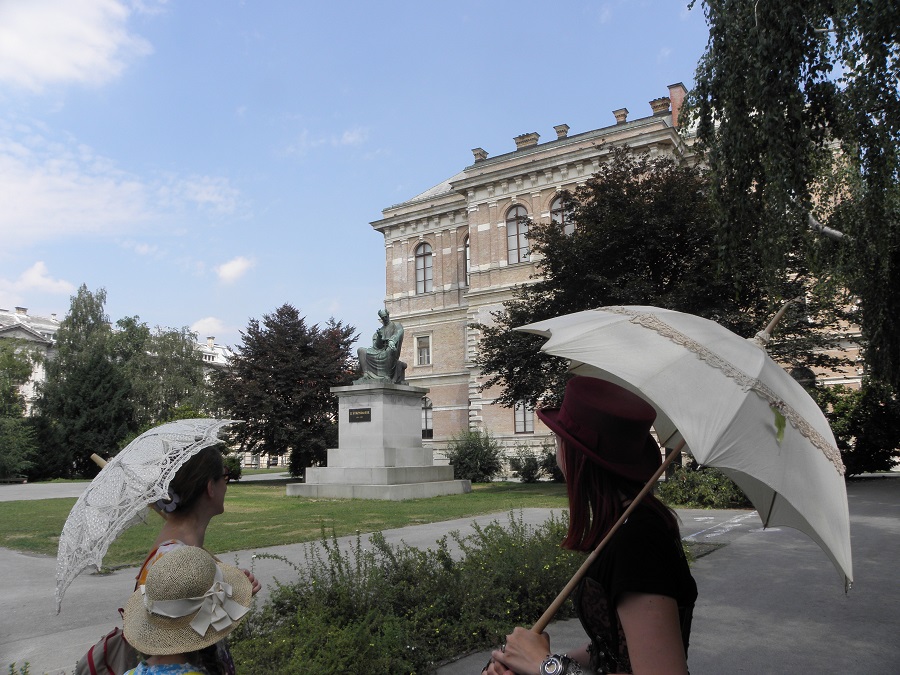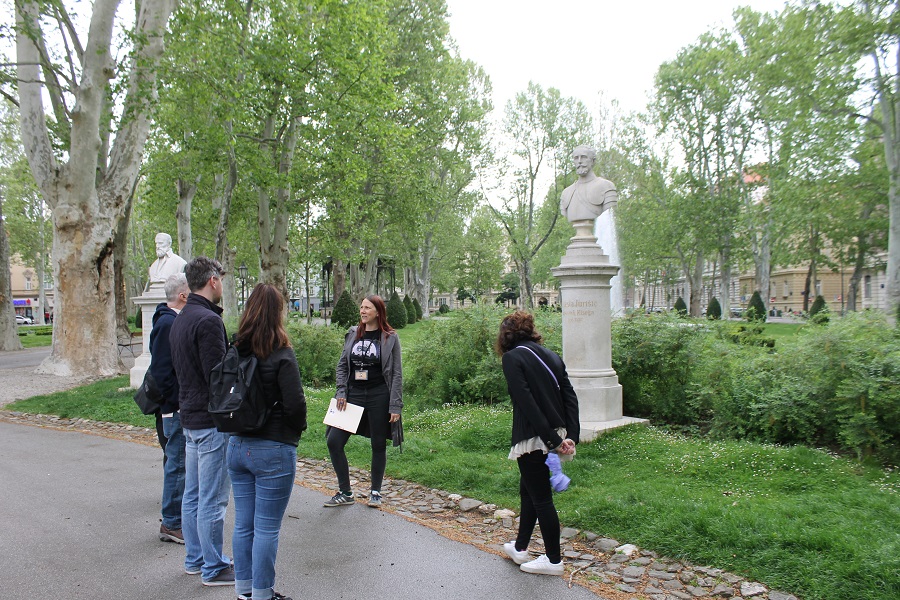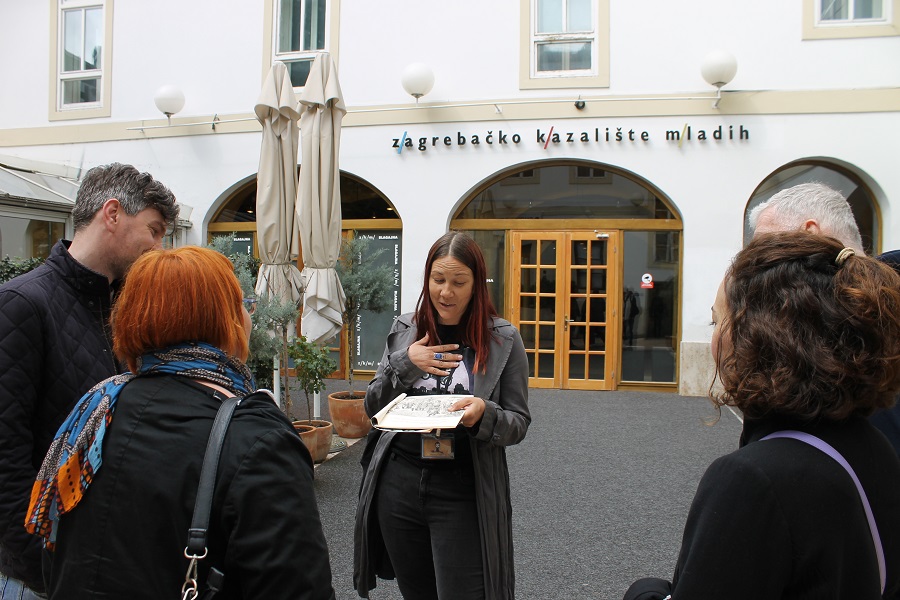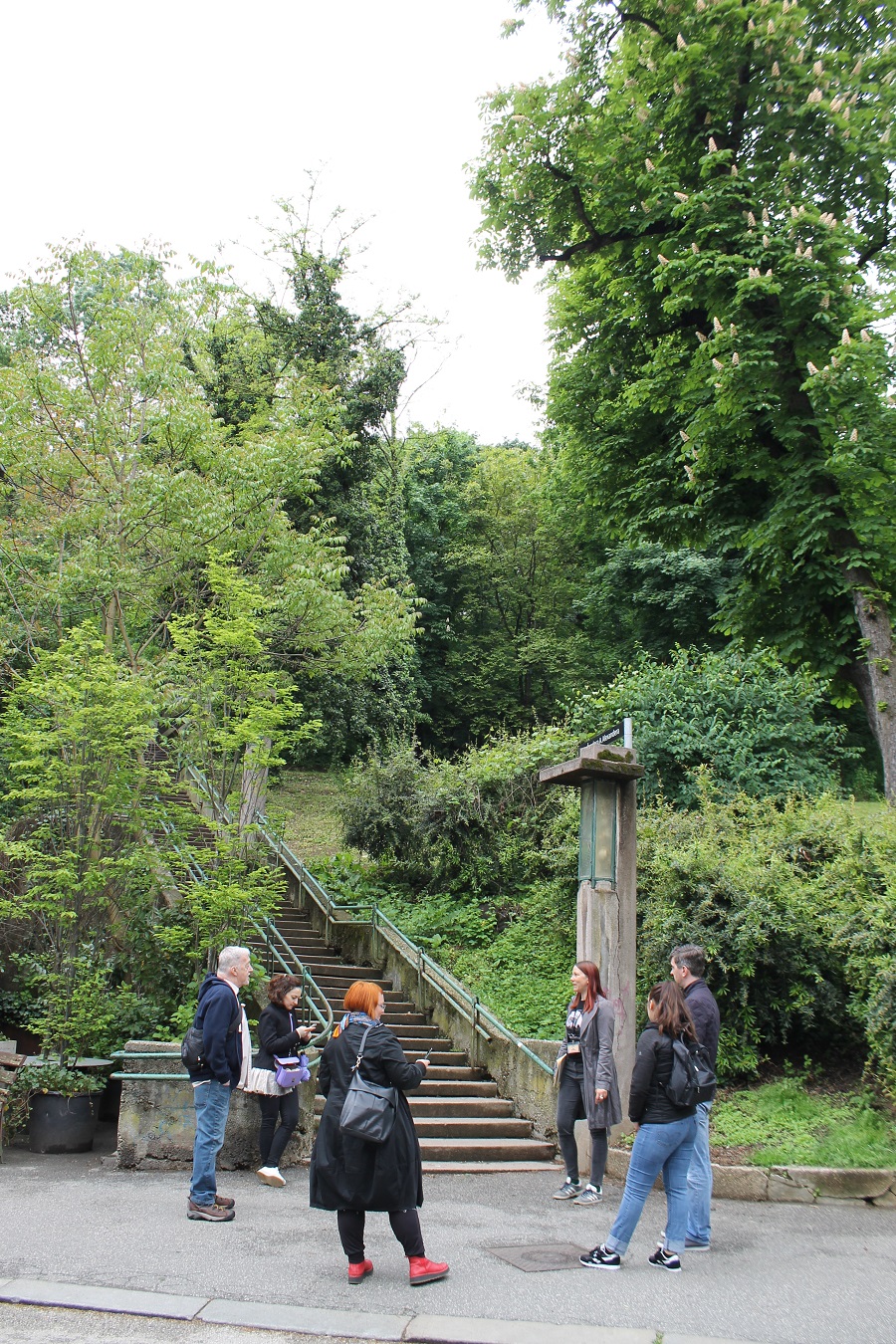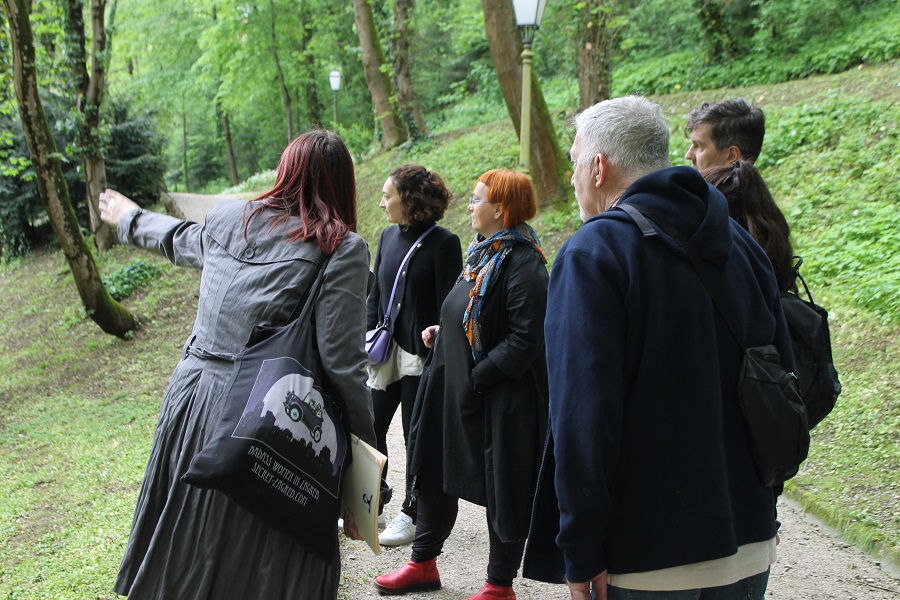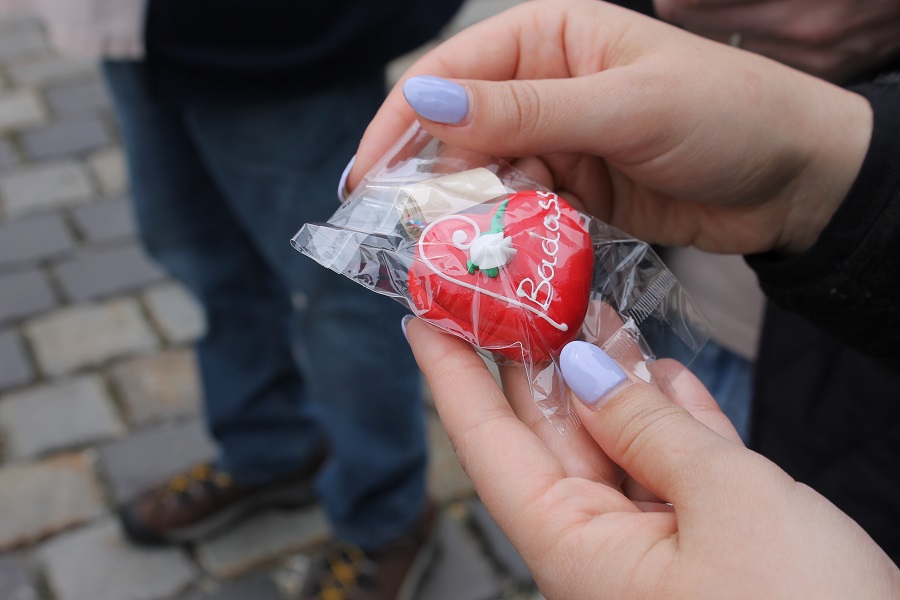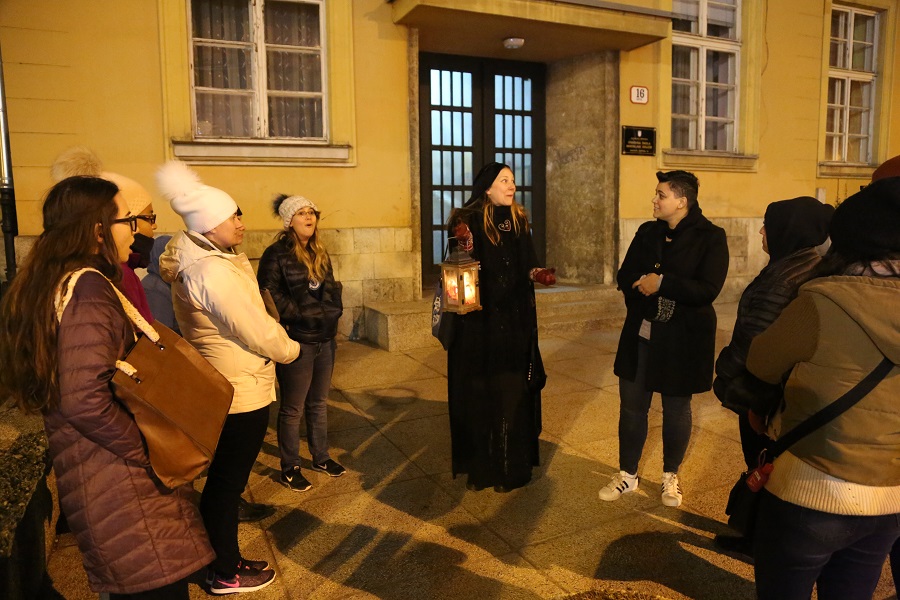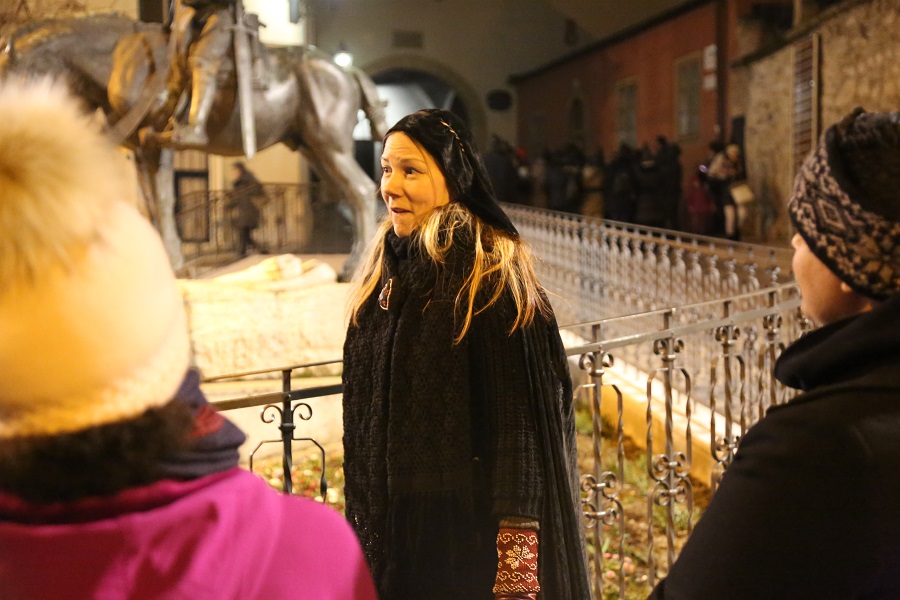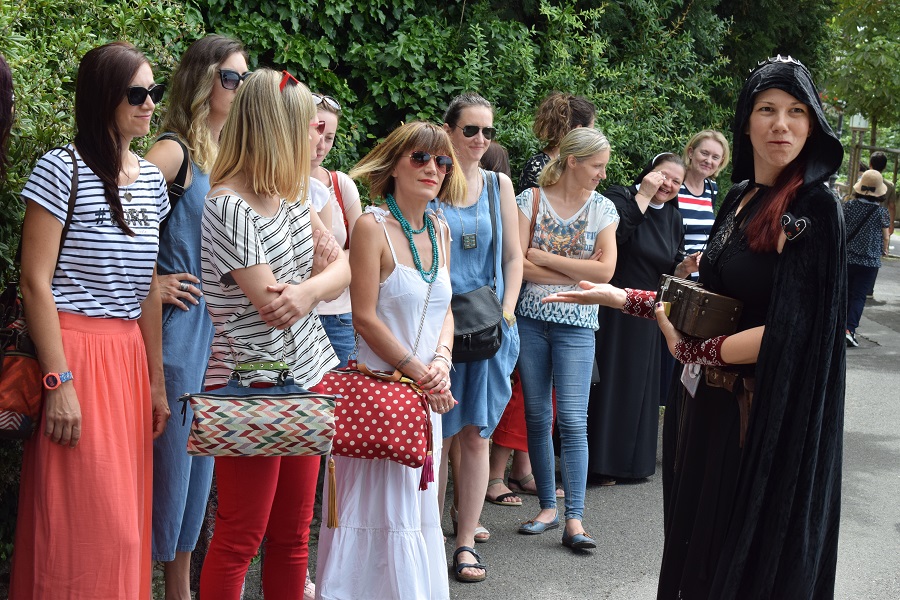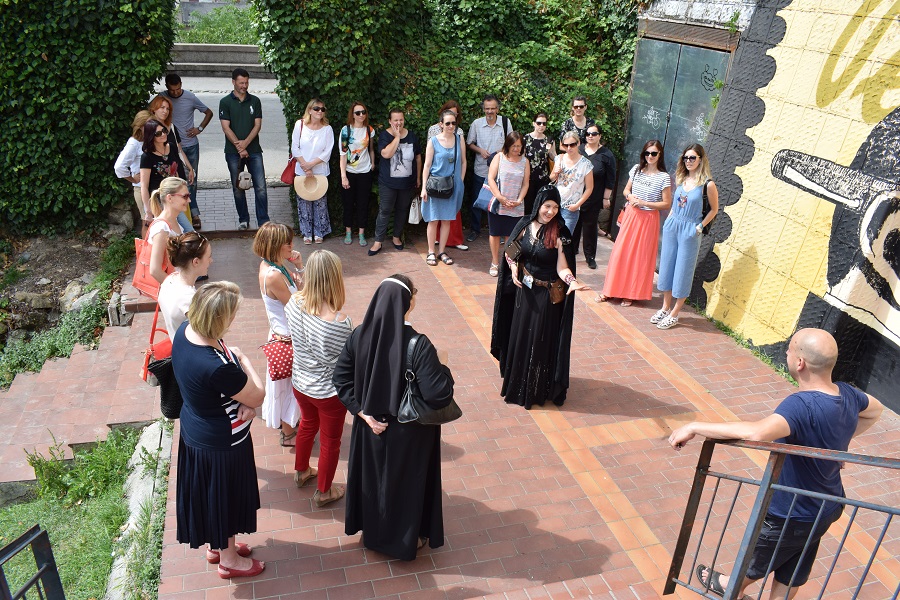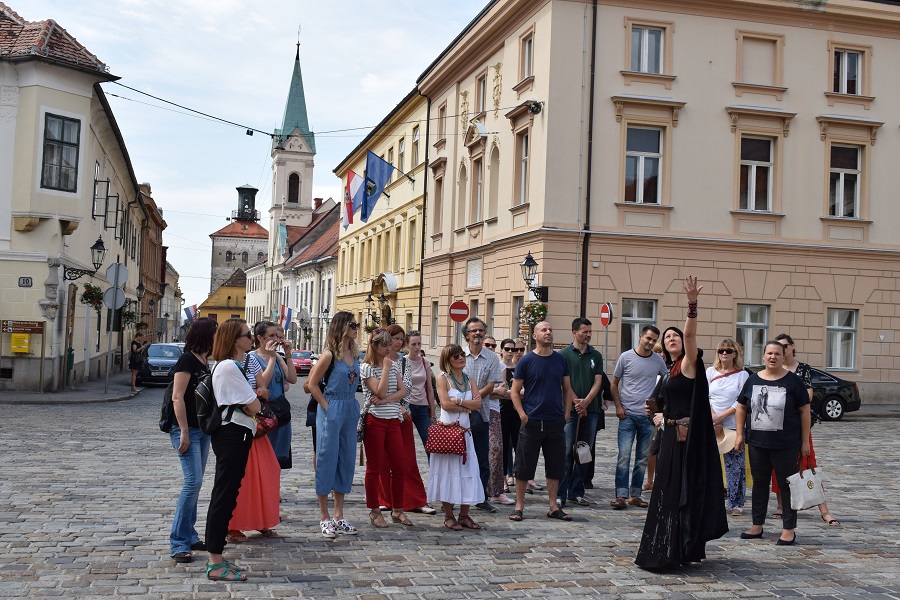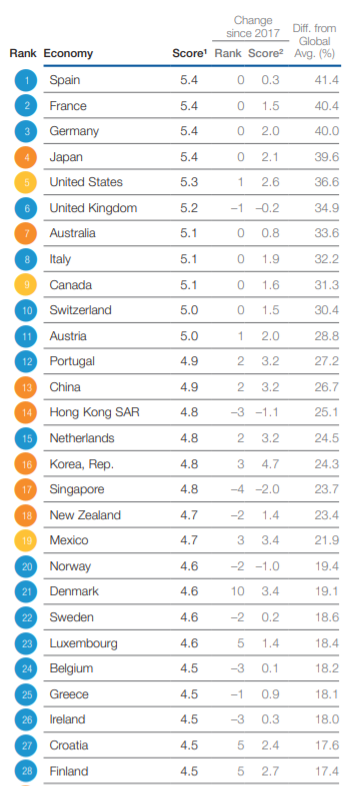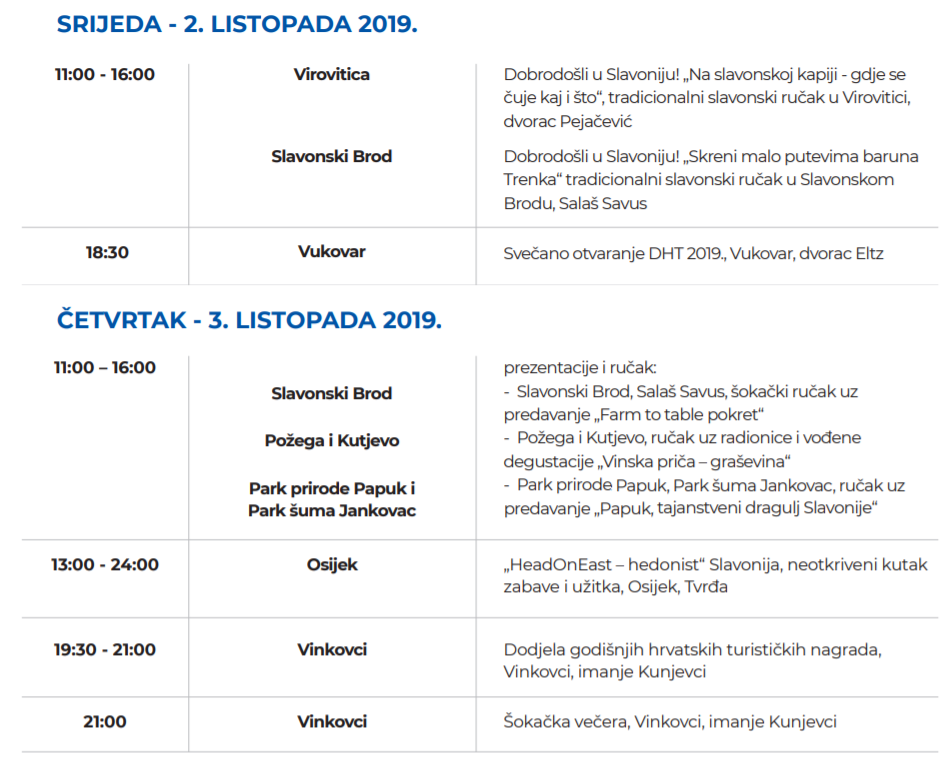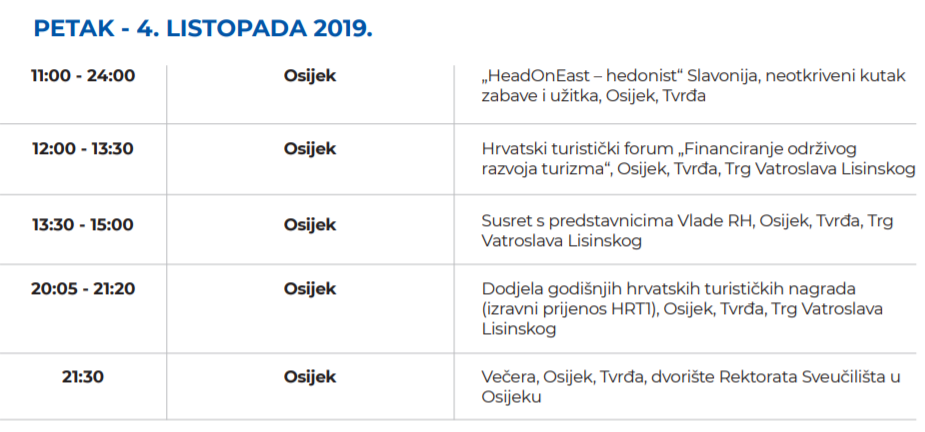10 Things I Learned at Days of Croatian Tourism in Slavonia
October 6, 2019 - Head on East - Hedonist: the new slogan for Slavonia and the east. Ten things I learned about Baranja, Slavonia and Srijem over the last few days.
Anyone who was anyone in Croatian tourism (and one fat Brit) headed on east this week, as Days of Croatian Tourism was held in continental Croatia for the first time. TCN was there the entire time, taking the opportunity to get to know this region less travelled a little better. It is a region I do not know as well as I should, and so I decided to use the opportunity to explore the region a little more, in addition to the official events, to see what I could discover.
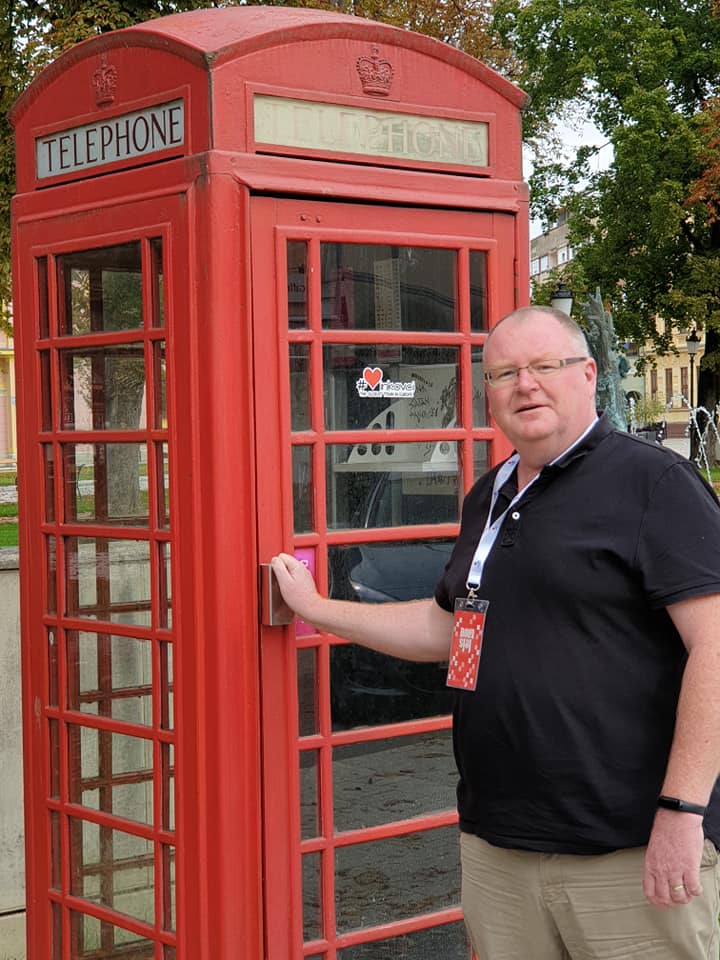
It was a fascinating few days, so much so in fact, that I am heading on east again in a couple of weeks to explore the region a little further with the family. There were surprises at every turn, not only finding an old British telephone box in the centre of the oldest continuously inhabited town in Europe.
Here are 10 things I learned about eastern Croatia that I did not know last week.
1. Baranja is Croatia's closest connection to the most connected airport in the region - Budapest.
In my mind, I had always thought of the gorgeous wine region of Baranja as being at the end of the world in terms of Croatian geography. Which I guess it is if you start from the island of Hvar, where I lived when I first visited several years ago.
However, if you close your eyes and have a little reset about perceptions of geography and tourism, the reverse is actually true. As I was touring Popovac Primary School close to the Hungarian border, it suddenly occurred to me that the most important international airport in the region, Budapest, is not that far away. In fact, there is nowhere closer to Budapest in Croatia than Baranja. With current roads (in the process of being upgraded), the journey time from the airport to Baranja is two hours. And Budapest connects with pretty much anywhere, 12 months of the year - the home of WizzAir and popular destination for many low-cost airlines.
Far from being far away, Baranja is actually very accessible, and if we can develop a message to convey that, the region immediately becomes more interesting from a tourism perspective.
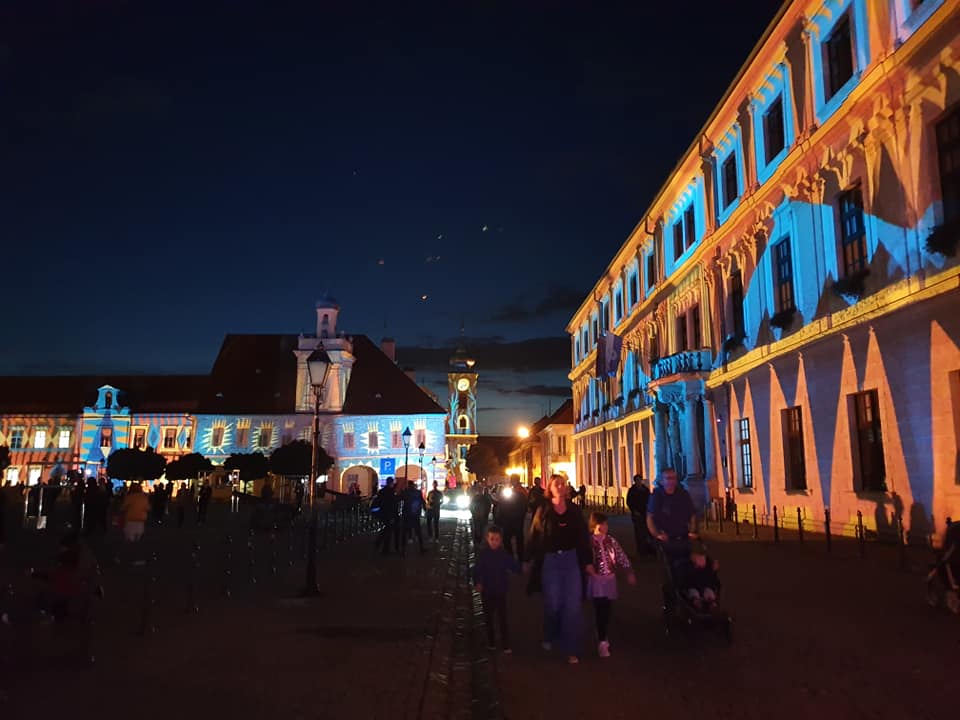
2. Osijek Fortress is a MAGNIFICENT festival venue (and let's hear it for Eltz Palace in Vukovar too).
Osijek Tvrda fortress was GORGEOUS during Days of Croatian Tourism. The historic old town shone, and the accompanying food festival and concerts were a total hit. Many locals were wandering around in wonder at the beauty of the city, while the visiting tourism chiefs (some for the first time) were totally impressed. It felt a little like Advent in Zagreb but with more of an authentic gourmet feel, as well as a more historic heritage backdrop. With the imminent reopening of one of the main squares and a continued project to upgrade the old town, things will only get better. Osijek showed it could stage a spectacular festival, and it was a privilege to have been there.
And it wasn't just Osijek. Eltz Palace in Vukovar hosted the first evening of Days of Croatian Tourism. And for those who thought that Vukovar is all about the suffering and the war, the event at Eltz was a real eye-opener. As you can see below, a stunner.
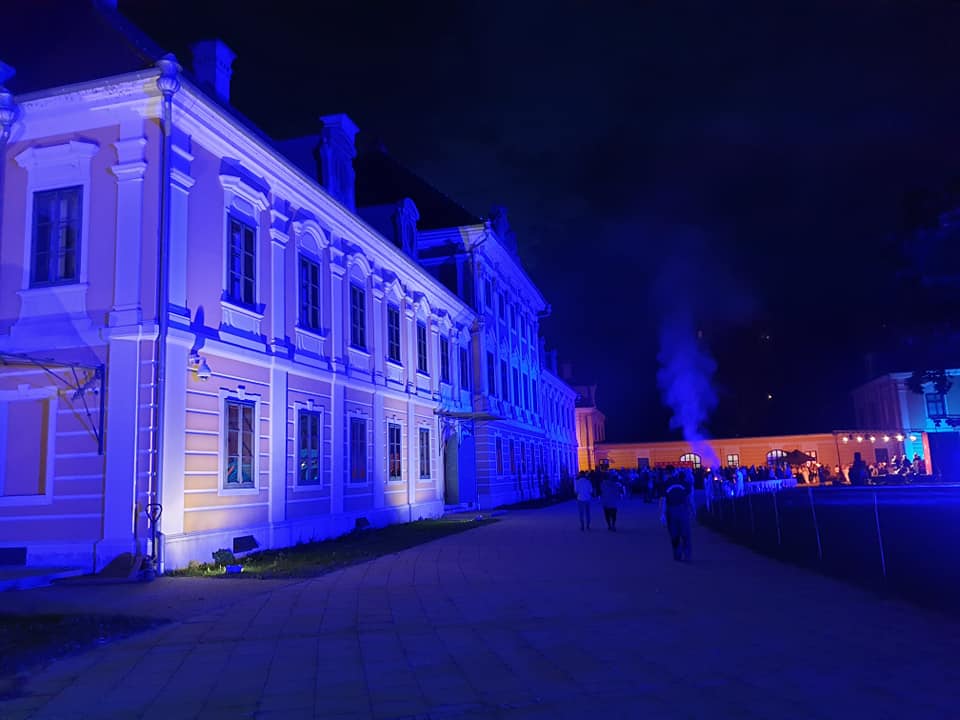
3. The process of metal casting began in Slavonia.
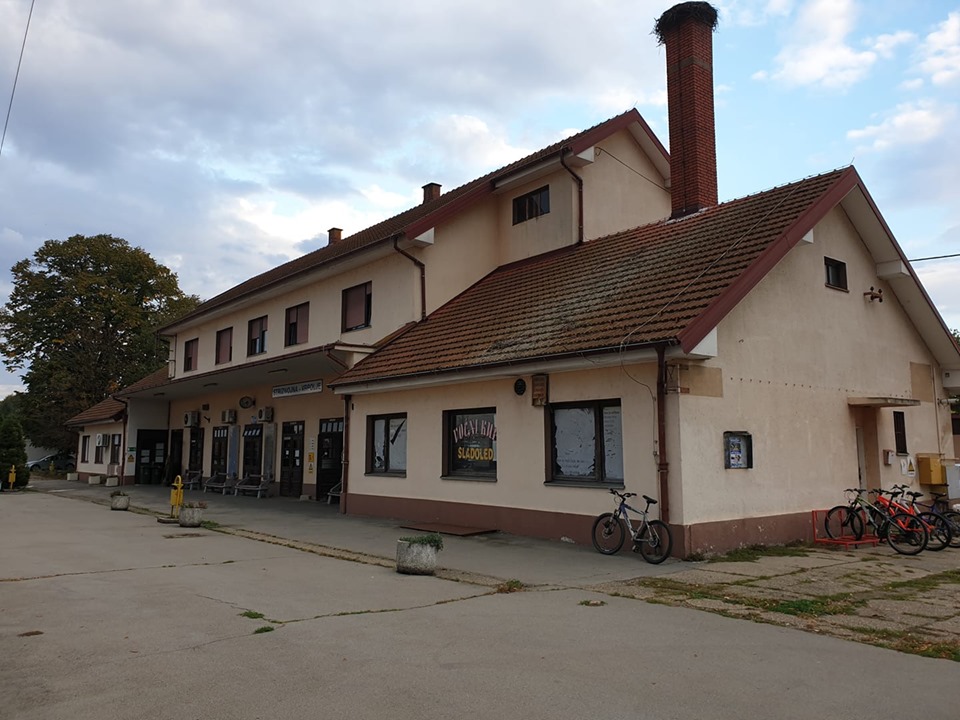
I knew that Vinkovci was the oldest continuously inhabited town in Europe, dating back some 8,300 years, and that its Vucedol culture had several world firsts, but I didn't know that they included the first metal casting in the world. Just one of many things you can learn on a walking tour of the historic centre, just one of many things you can pick up from the excellent tri-lingual signage (Croatian, English and German) around the town.
Goran Rihelj, the man behind the excellent HR Turizam and the initial instigator to bring Days of Croatian Tourism to Slavonia, has been inviting me to stay for years. It was a pleasure not only to meet and stay with his family during this, his finest hour, but also to walk the Vinkovci streets with him to learn more of their secrets.
4. Vinkovci has a river which flows in both directions.
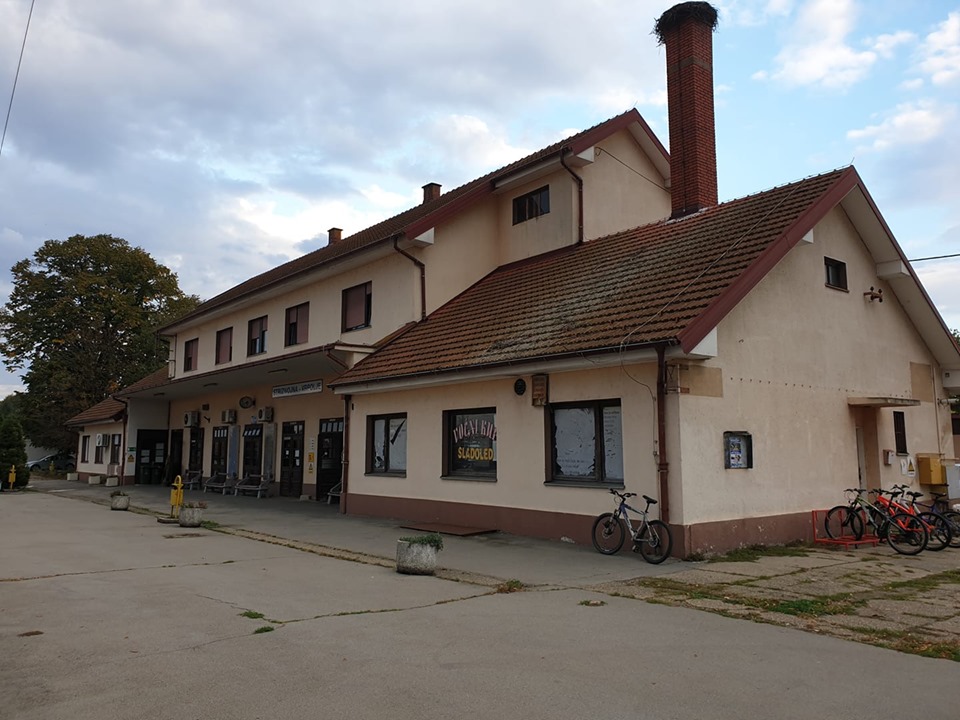
I need to research this one a little more, but there are only a handful of rivers in the world which can flow in both directions. The River Bosut, which flows through Vinkovci, is one. Apparently, there is a very slight incline as the Bosut passes through the town (0.8%) and when the wind gets up, the water heads backwards.
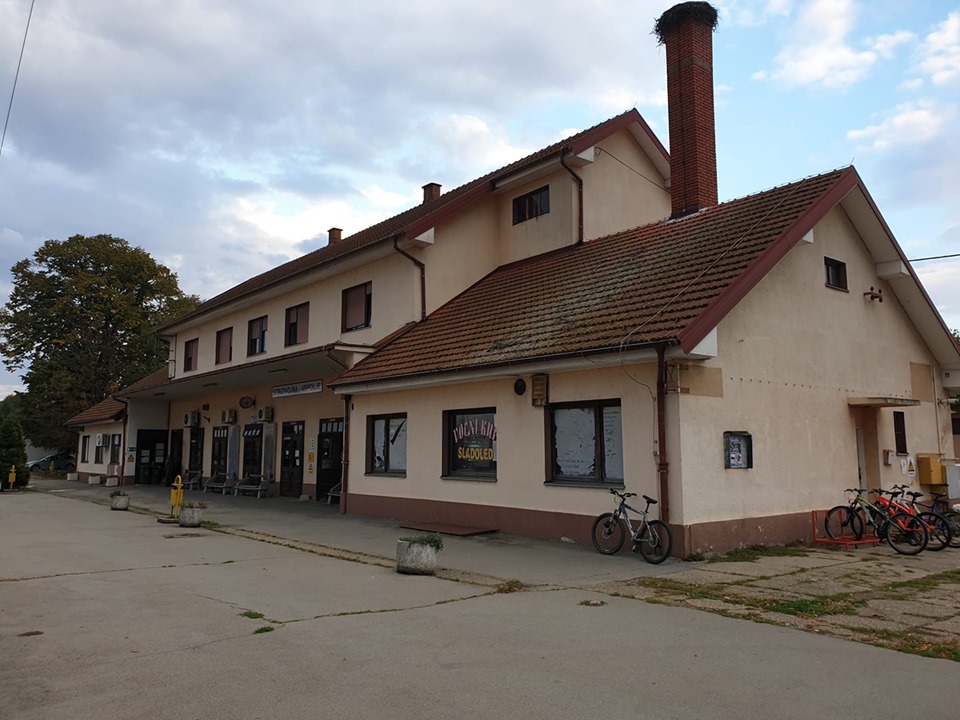
5. There is a quality British pub literally in the middle of nowhere.
So why is there a British phone box in the middle of Vinkovci? It is due to one legendary man from Leeds, apparently, who came to the region in 1991 to help defend Croatia. I have yet to meet Steve Gaunt or read his story in any detail, but he was apparently wounded in the fighting and became a Croatian citizen in 1994.
In addition to bringing the phone box, Gaunt also recently opened an authentic English pub in a village close to Vinkovci. Actually, it is not in a village at all, more in the middle of nowhere and then a little further.
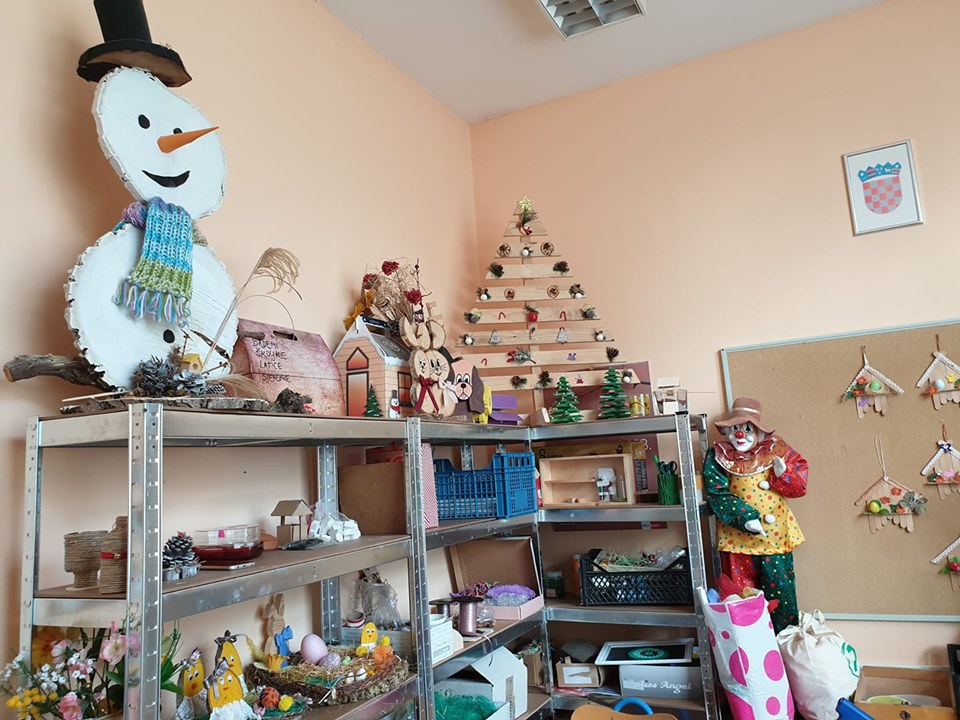
I managed to find The White Boar eventually, which was sadly closed. Steve replied by text that he had to pop back to the UK, so we will save that pint for the next visit in a couple of weeks. There will be a separate story on my journey to The White Boar soon. While you wait, here is where you need to be if you fancy popping in for a pint.
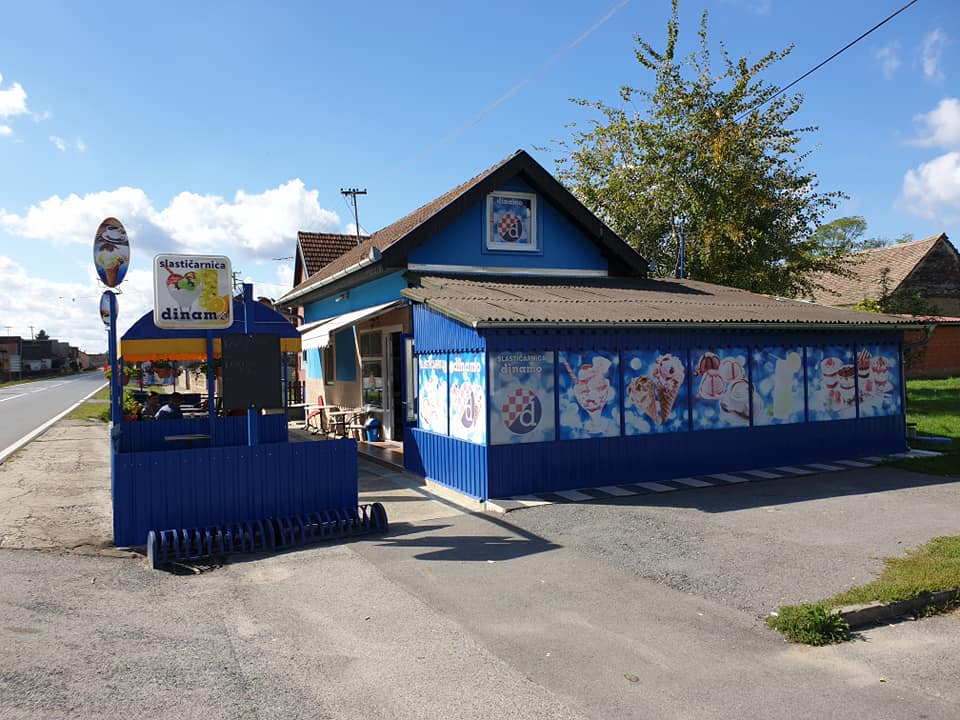
6. Baranja has international ice cream tourism, a Mecca for ice-cream loving Dinamo fans.
"But did you know that Baranja has the best ice cream in all Croatia?" I was asked. Ha, this to a boy from Jelsa - no chance.
And so I set off in pursuit of a rather curious story which is bringing a totally different type of tourism to Croatia - ice cream tourism. Not one for Hajduk fans perhaps, but Slasticarnica Dinamo in Baranjsko Petrovo Selo is located just 2km from the Hungarian border. The ice cream is so good (and it really is) that many Hungarians come over for an ice cream.
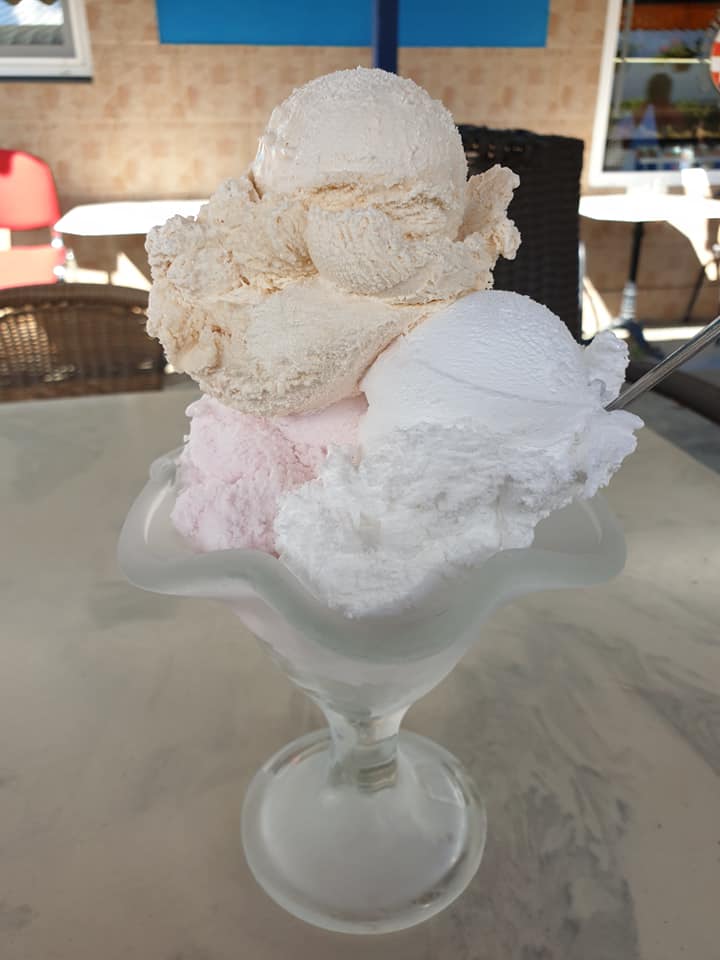
And with prices at just 5 kuna a scoop and the scoops the size of small footballs, this is what you get for 15 kuna. Or coffee and Cedevita for 10 kuna...
7. A craft beer named after a beer-loving Roman Emperor who was born in Slavonia.
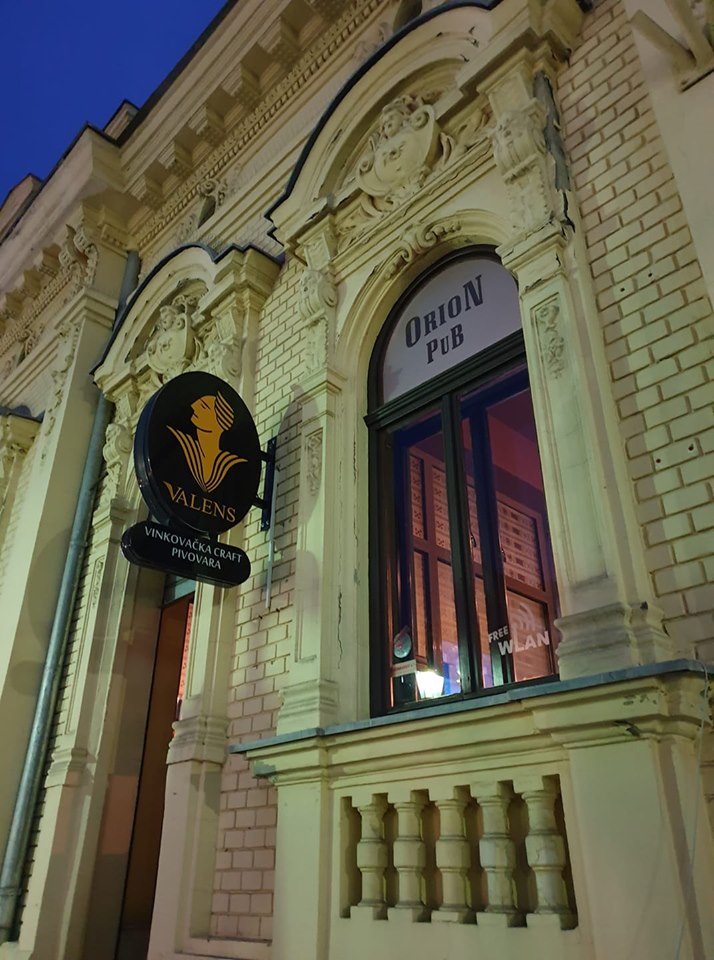
So much Croatian tourism potential and history in this photograph, and the only thing I didn't know already (and this will shock some of you) was the bit about the beer.
The Valens craft brewery in Vinkovci, another recent addition to Croatia's vibrant craft beer scene, and another part of Slavonia's impressive gourmet offering. Named after Roman Emperor Valens, one of two Roman Emperors born in Vinkovci, Valens is the latest chapter in the Slavonian beer tradition which dates back 5,000 years to Vucedol culture. While most emperors drank wine, Emperor Valens was such a beer lover apparently that he enjoyed the nickname Sabaiarius, or 'Beer Belly'.
And why is the pub called Orion? After the world's oldest calendar which was discovered in... you guessed it, Vinkovci.
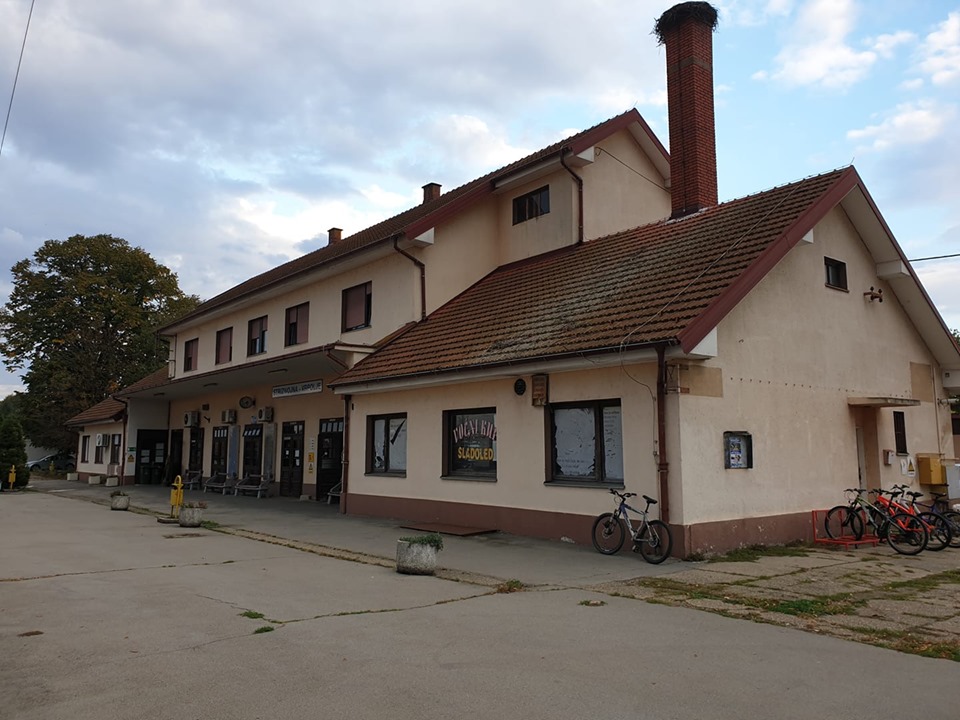
8. A Slavonian train village and Murder on the Orient Express.
A couple of days before I headed east, there was a story in the Croatian media about a small village called Strizivojna which had laid claim to the location as the village near where the famous Murder on the Orient Express killing took place in the Agatha Christie classic. There was talk of turning this into a village tourism attraction with a themed wagon museum and a themed cafe. I decided to pop in, but sadly found myself a little ahead of time, but it will be one more curiosity when it does come to fruition.
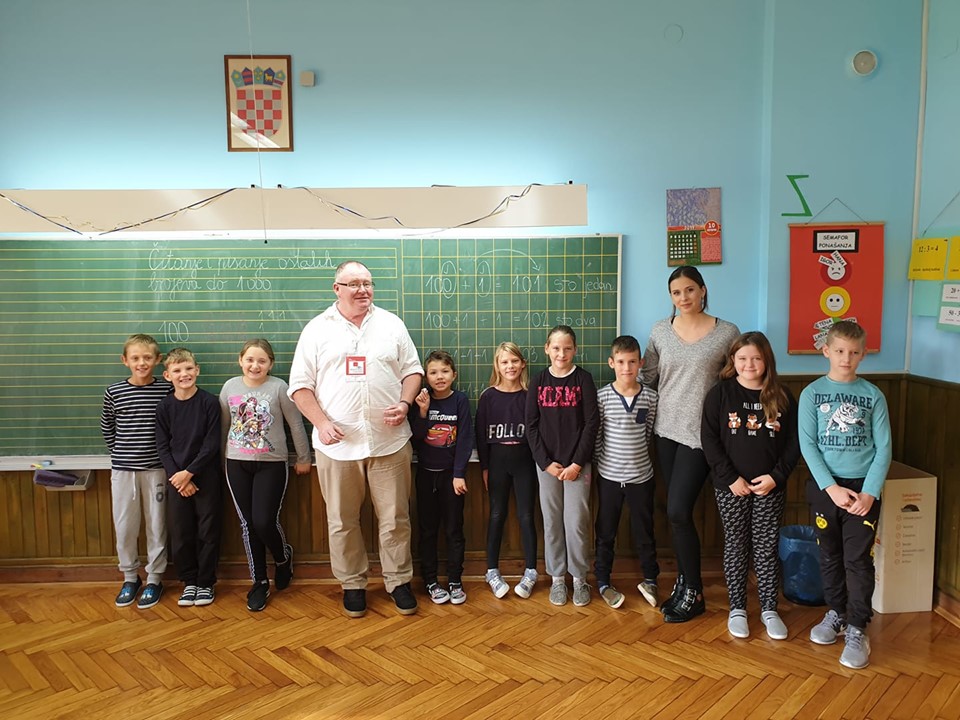
9. Life in a Baranja school - wow!
And while everyone else attending Days of Croatian Tourism was understandably there for the tourism, the part I was looking forward to most was visiting a school in northern Baranja which had reached out to TCN a couple of years ago.
My expectations of what I would find there were low, but what I found was beyond inspiring. The energy, creativity and attitude of the teachers, the well-maintained school and the very happy kids were the undoubted highlight of my few days in the east. Much more on the fabulous Popovac school coming on TCN - a new feature I think many will like.
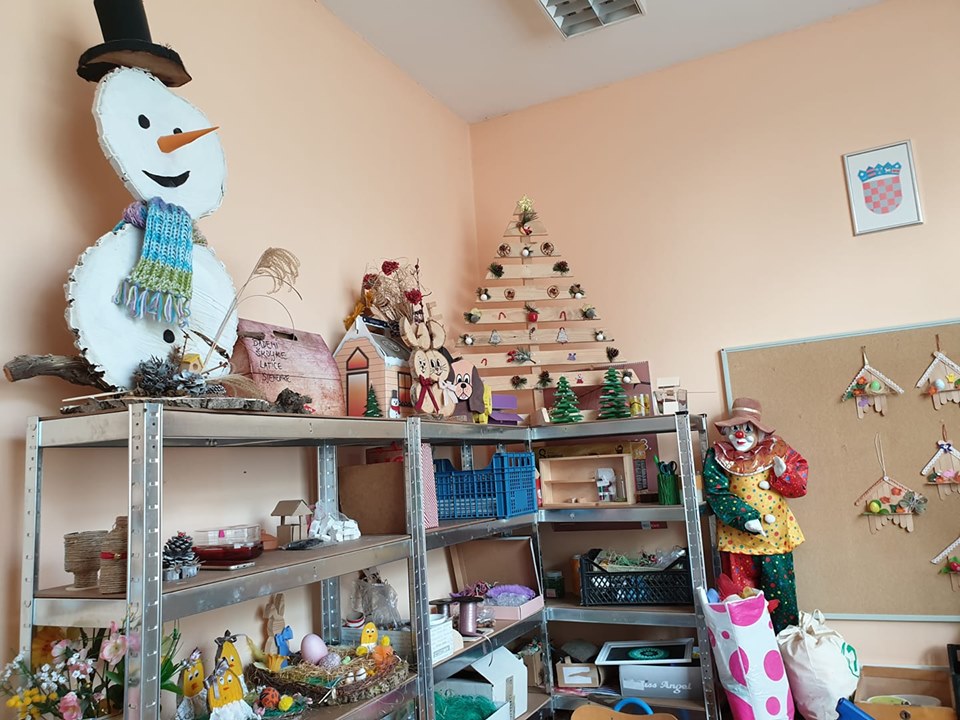
And the other undoubted highlight was a visit to a very dear friend of mine who is undergoing a complete change of direction in life - and one which was awesome to observe at close quarters.
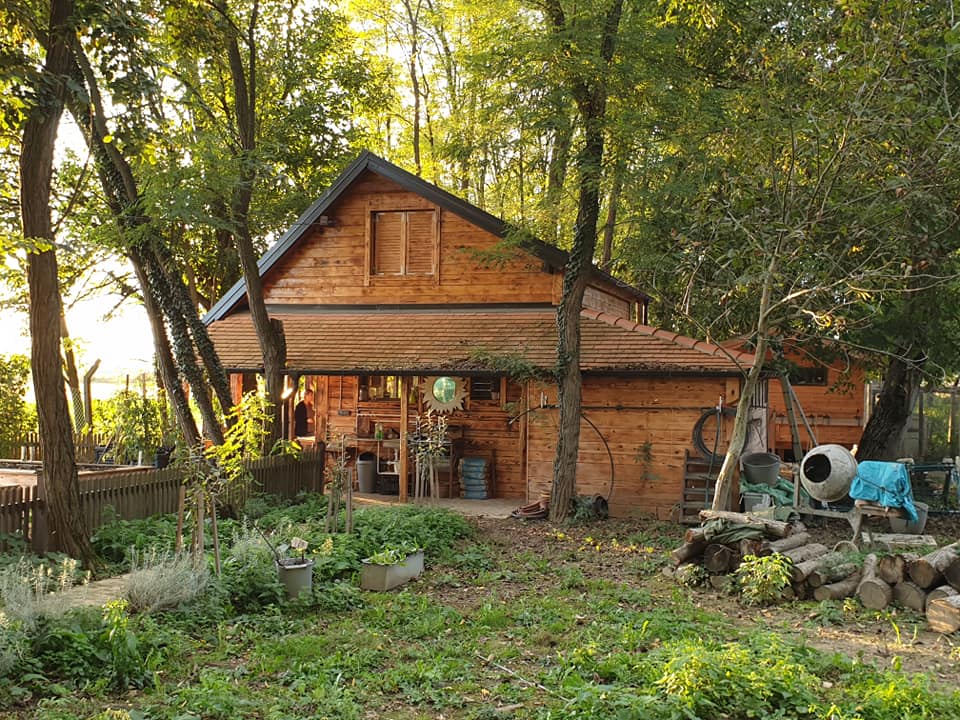
10. Organic Slavonia - gourmet paradise and a model for the future?
TCN readers will be familiar with the incredible photos and timelapse videos of Mario Romulic and Drazen Stojcic. Arguably the best in the business in Croatia and surrounding area, the Osijek maestros have generously supported TCN with their work from day one. But young Mario has had another passion in his head for many years now, and one which he is now giving his undivided attention to - an organic farming lifestyle.
Just a one-night stay took away the stress levels. I had expected to be awoken at dawn by the free-range hens, but instead it was an Osama-lookalike with deep booming voice who woke me from my considerable slumber at 09:40. I can't remember the last time I slept that long. Located 1km from Kopacki Rit Nature Park, OPG Mario Romulic is an absolute gem, and that is before you come across the passion of the man behind the project. And with 3 hectares of land next door owned by Mario waiting to be developed into an organic tourism resort, this has the potential to become one of the top detox spots in all Croatia.
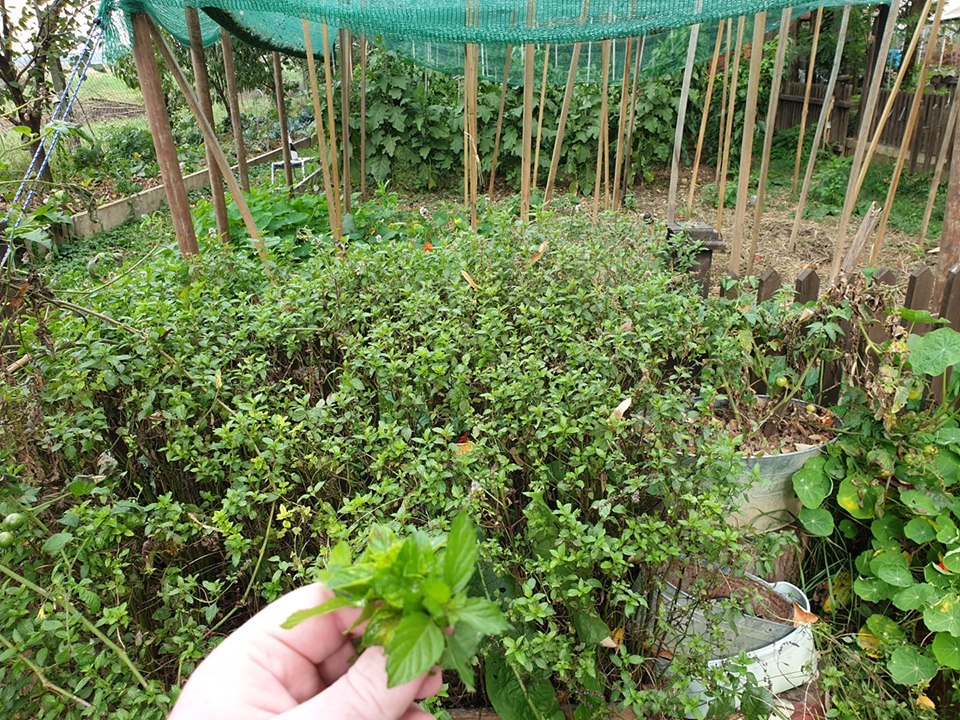
"Tea or coffee with breakfast?" asked Mario, while scrambling his organic eggs and putting together a health Slavonian platter.
"Tea please. That mint tea yesterday was fantastic."
"So you see the mint in the garden out there? Go and pick some for your tea."
Three days away from motorways, laptops and the daily grind, and a relaxing journey back in time and pace of life. They talk about the relaxed 'laganini' lifestyle in Dalmatia, but Slavonia has something similar.
"So much potential here. This could really be an organic tourism powerhouse."
And, as I found myself back in the garden collecting more mint, I found myself agreeing. And while agreeing, also thinking about that Croatia 2.0 reset.
Slavonia is treated as a poor cousin with a disability at times in Croatia, at least according to my observations. If it was left to breathe instead, the results would be great.
But I also think that with a little resetting of focus and the way the world is going, regions like Baranja and Slavonia, which boast great nature, a warm people and great gourmet and cultural offers may yet surprise and find themselves as a magnet for those who want to work remotely and enjoy a healthy and clean-living lifestyle.
And now I have Slavonia in my blood, much as I do Dalmatia as well. More to come on our next visit in a couple of weeks. In the meantime, if you want to learn more about this fascinating region, here are 25 things to know about eastern Croatia.
Croatian Tourism Made Less in 2018 Than Previous Assessments Suggest
As Novi list/Jagoda Maric writes on the 30th of September, 2019, revenue generated from Croatian tourism last year stood at 600 million euros, or about four and a half billion kuna less than any official estimates have claimed so far, according to the regular five-year revision of statistics on Croatia's foreign exchange by the Croatian National Bank (CNB/HNB).
The revenue apparently generated by Croatia from the arrival of foreign tourists is estimated to stand at 9.48 billion euros (currently) for the year 2018. However, the audit which was based on much more accurate, MUP (Ministry of the Interior) data on the arrival of foreign tourists, showed that in this segment, Croatia actually earned 600 million euros less.
This of course also means that the share of Croatian tourism in the country's GDP is lower by at least one percentage point than was previously believed, accepted and pushed. In terms of tourism revenue, the Croatian National Bank's audit for each year since 2003 has actually reduced foreign tourism revenue.
According to the new calculation methodology, revenue generated by Croatian tourism during the first half of this year was 2.7 billion euros, compared to the 2.55 billion euros recorded in the same period last year.
As part of the review of international indicators, the Croatian National Bank also included a larger calculation of workers' remittances, that is, it included an estimate of remittances, but also of what foreign workers employed here in Croatia send back to their respective homelands.
Last year, over 462 million euros of these informal workers' remittances arrived in Croatia from abroad, while 152 million euros of such remittances left Croatia. This means that, when including informal workers' remittances in the picture, 1.17 billion euros were sent to Croatia by people from abroad, while foreign workers from Croatia sent 303 million euros out of the country, back to their own countries.
The Croatian National also decided to include used car imports over the past fifteen years, too, which (on a yearly level) involve costs ranging from 41 to 317 million euros, and this has increased significantly since Croatia's accession to the European Union (EU) back in July 2013.
The correction of international indicators also implies the inclusion of trade credits in gross external debt, which is a delay or payment deadline for imported goods of up to six months. Thus, the estimated amount of these loans last year was 3.9 billion euros, which would mean that Croatia's external debt was 42.7 billion euros.
Make sure to follow our dedicated lifestyle page for much more.
Gari Cappelli Discusses Exposure of Croatian Tourism to Crisis
On the occasion of World Tourism Day, which embodies one of the most important and key economic branches in Croatia, the second conference entitled Tourism and Urbanism took place in the Vir Municipality, organised by Poslovni Dnevnik and Večernji list. The face of Croatian tourism, Gari Cappelli, discussed the ins and outs of the sector.
As Poslovni Dnevnik/Ivan Tominac writes on the 27th of September, 2019, longtime Minister of Tourism of the Republic of Croatia, Gari Cappelli, spoke precisely with the aim of informing the public about the current state of play and future plans in Croatia's tourism sector. His overall message was that he believes the situation is good, and with new projects, Croatia is ready to raise the sector's overall quality.
''If you had 1 to 2 percent more physical indicators, you're talking about a successful tourist season, and if you had 3 percent less physical indicators, then you're not a good minister, even though you created better financial effects and created more income with less expenditure. I avoided talking about physical indicators, but then they said that the numbers were bad.
There was talk of the July slump and the collapse of tourism, but the tourism industry saw 6 percent more tourists and 5.4 percent more revenue in the first 6 months of 2019. In July and August, due to the increase in prices, we had a short stagnation because we were waiting for a possible decrease of the same. In the end, when we add it up, we had 8 percent better results. We have fiscalised more and generated a higher turnover with higher revenues, and we expect a slight increase of 1 to 2 percent in September, which will confirm the forecasts in which we spoke abour 3 percent growth,'' Croatian Minister of Tourism Gari Cappelli stated.
When it comes to apartment building and oversaturation, he said he called for a halt last year and a reorganisation of the situation which would be better aimed at matching supply and demand.
''In three years, we received 145,000 new private accommodation units and only 5,000 in terms of the hotels. On the other hand, there was an increase in occupancy in 5 star accommodation units and a decrease in those with 3 star ratings. No one asks if it's expensive, if it's worth it. The sustainability of the system must stop in the sense that supply is higher than the demand for private accommodation,'' Cappelli added.
Austria, which transformed the concept of diffuse integral hotels 30 years ago, also faced the Croatian challenge of having too many private accommodation units. This has to start happening here as well, and it's all about re-categorising and naming things for what they actually are.
''If we own 30 apartments, then we're really talking about a hotel, and diffuse integral hotels have to start being built with a common reception and with a certain quality and offer that will be upgraded. These are the opportunities that they worked on in Austria when they were faced with this challenge over there. This can be an advantage for Vir in terms of increasing quality.
Croatia has quality accommodation. In some countries there are 60-70 hotels. We have the highest 3-star rating capacities, and with those, there's still been a 3 percent drop. That's why we have passed a law on recategorisation. What's happened to us that is that the 3 star category facilities were categorised by someone who did so many years ago, and today, these are not the same apartments of the same quality, because time moves on.
Re-categorisation will raise both price and occupancy if you offer people what they paid for. The accommodation has to be upgraded every day, it has become a classic type of enterprise. Apartments are no longer necessarily family accommodation but entrepreneurship and business,'' explained Cappelli, adding that a good offer and frequent upgrading results in a 150-160 day occupancy.
An example of good practice is Istria, which made good use of the fact that it was not in the peripheries of war thirty years ago, but on the other hand, they were educated and led the situation with positive examples from abroad. Shifts have started to happen in Dalmatia in the last 4-5 years, and they are seen in segments that were primarily focused on infrastructure. Thus, according to Cappelli, a positive example is the development of wine and gastronomic tourism in places like Benkovac near Zadar.
In addition to education, in order to generate traffic, it's also necessary to cooperate with airlines and ferry ports and to take this service to a new level.
''Season 365 was also supported by 70 million kuna to encourage air travel, which resulted in 10-15 percent more passengers as we do joint advertising with tour operators and airlines. In two years, we've come to the point of having flights leave earlier and hotels staying open for longer. The ferries for the islands, on some routes, such as that of Hvar, now have 18 catamaran lines running.
As part of the new round of tax relief, the tourism tax rate should be cut by 13 percent, and as Cappelli points out, this should be reflected in a 10 to 12 percent pay increase. Prices will not be reduced and investments will seek to raise the service to a new level.
''Unless that is reduced, there will be no manpower and facilities will not be able to be filled up,'' Cappelli said.
''Croatian tourism employs about 150,000 people, with a further 18,500 abroad. Importing labour is not only a Croatian reality, for example, Austria imports around 50,000 in terms of labour and is growing. There is nothing new happening to us that is not happening elsewhere,'' he added.
Currently, quality conditions are being created for the development of human resources in tourism, and this is being attempted through the establishment of Centres of Competence in Tourism and Hospitality.
''We invest in staff training through 6 centres of competence for tourism, all with the aim of achieving more practice and less theory for high schools and then for retraining and lifelong education. We're financing that with 300 million kuna, and our lecturers will come here from abroad,'' said Cappelli
The much talked about Cro card project also goes in the direction of employee care. According to Cappelli, the employer would need to pay out 2,500 kuna as a reward to his employees, and that money could then be spent here in Croatia.
In addition to employer-to-employee care, mutual encouragement should be encouraged, and this is possible through affiliate advertising. Gari Cappelli also touched on the need to make sure residents are taken care of, and that tourism isn't allowed to get out of hand and make their daily lives needlessly difficult.
''The residents must feel good first, and then come the tourists. As much as 75-80 percent of the population must be satisfied with the state of tourism in their areas, and this is tested through 15 parameters that are expressed by the local population. In Lošinj, when I was the mayor there, they were pleased with the situation. If dissatisfaction exists, then you have dissatisfied tourists and residents,'' he said.
In the end, he addressed the potential crisis and how Croatia could best try to shield itself as much as possible from its negative effects.
''We're more exposed to a crisis because we're tied to the German market. As many as 2,900,000 tourists come to Croatia from Germany and that's our problem. That's why we're focused on promotion on distant markets, and in the off-season, we're planning promotion in 14 countries,'' concluded Croatian Minister of Tourism Gari Cappelli.
Make sure to follow our dedicated lifestyle and travel pages for much more.
Creativity, Best Practices & Absenteeism at Croatia 365 Conference in Zagreb
September 25, 2019 - The 3rd edition of 'Is Croatia 365 Tourism Possible?' took place at the Zagreb Sheraton yesterday, a fascinating event on so many levels, and with many thought-provoking ideas and questions.
I am developing a mild obsession with the culture of the Croatian conference.
Having hardly been to a Croatian conference until about two years ago, I find myself attending a couple of month on average. I find them incredibly useful in general, both from the content of both Croatian and international speakers, as well as a chance to network and make connections for the greater good of TCN. But I also notice some recurring themes:
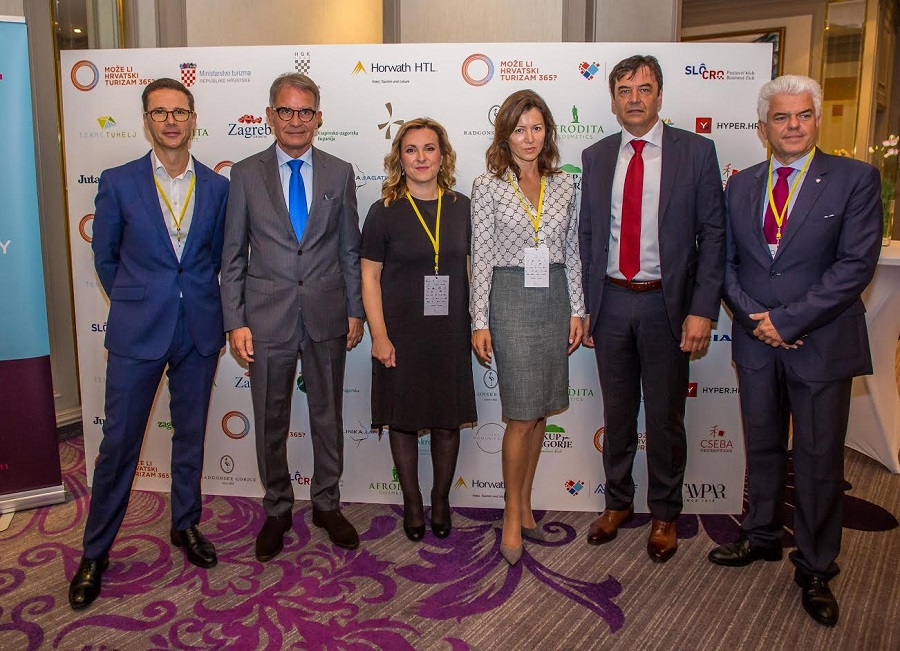
The conferences usually start with a photo shoot with the great and the good of the conference, as was the case at yesterday's 'Is Croatia 365 Tourism Possible?' in Zagreb.
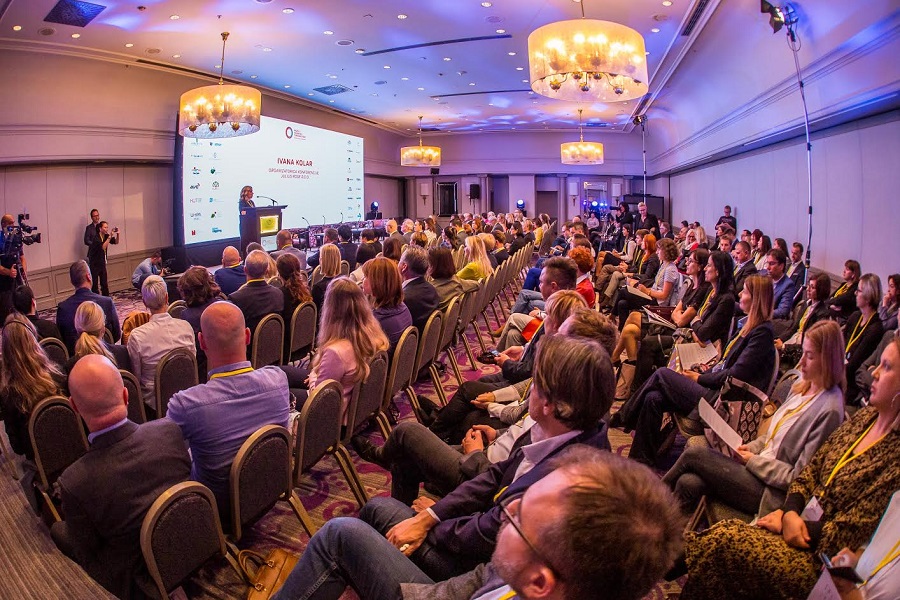
There is often a photo from the opening session showing just how full and successful the conference is, such as the one above.
And then, of course, the official PR press release which mentions all the names of the great and good, often with a quote from each of the speakers. A permanent online reminder of another successful conference attended by the key officials working tirelessly to do their job and carry out their public service.
If only...
I found yesterday's conference extremely interesting, with lots of take-home ideas for me personally. There were some great ideas presented, as well as some rather controversial topics touched on, and it would have been great to have had the engagement of those key officials in those discussions.
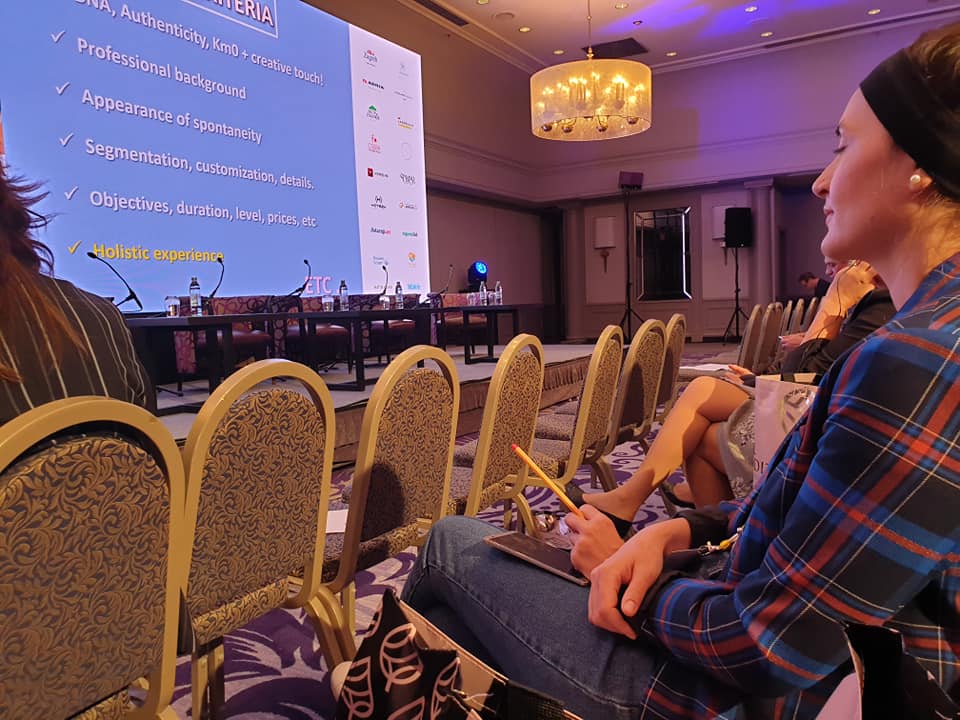
But this is the reality, conference after conference, of what happens in Croatia. As soon as the brights lights have gone and soundbites given, the key officials disappear to wherever it is they go. Of course ministers are busy, I understand that, but in addition to being rather insulting to the international speakers flown it at great expense to address them, if our tourism officials are not present to listen to the ideas, suggestions and best practices of the experts, what is the point?
Unless our tourism chiefs already know everything of course...
And it is not just the big conferences. Even I was embarrassed as a foreigner at a boutique health tourism seminar last year. Designed specifically stakeholders from Croatia's medical tourism industry and by invite only, an American medical tourism branding specialist was flown in to hold an intensive workshop with stakeholders to work on developing Croatia's medical tourism brand.
Despite confirmations, neither the Ministry of Tourism or Croatian National Tourism Board bothered to show up. When I asked the tourist board about the no show, they insisted that they had been present in a room of just 15 people, before later acknowledging that they had got confused with another conference a month later.
Health tourism is one of the key strategic goals of the ministry's 7-year plan, and global experts agree that Croatia has the potential to become one of the world's top 10 medical tourism destinations in 10 years if its stakeholders can unite.
Six years into the 7-year plan and we still don't have a task force committee.
But let's return to yesterday and the potential of Croatia 365 tourism, the subject of one of the eternal discussions of Croatian tourism - how to lengthen the season.
it is now five years since the launch of the high-profile Croatia 365 project, a concept lifted entirely from the UNWTO Punta del Este 365 (as previously reported on TCN). Five years later, I am struggling to find evidence of the original Croatia 365 project online, although Uruguay 365 lives on:
I contacted the efficient national tourism board PR department for an update on how the project is going and will add to the article when they respond. But I do remember that the last update we reported on Croatia 365 showed that things were not going very well. our article of February 2016 on the subject became the number one story of the day in the Croatian media and let to requests for meetings from the then director the national tourism board and the office of the then Minister of Tourism.
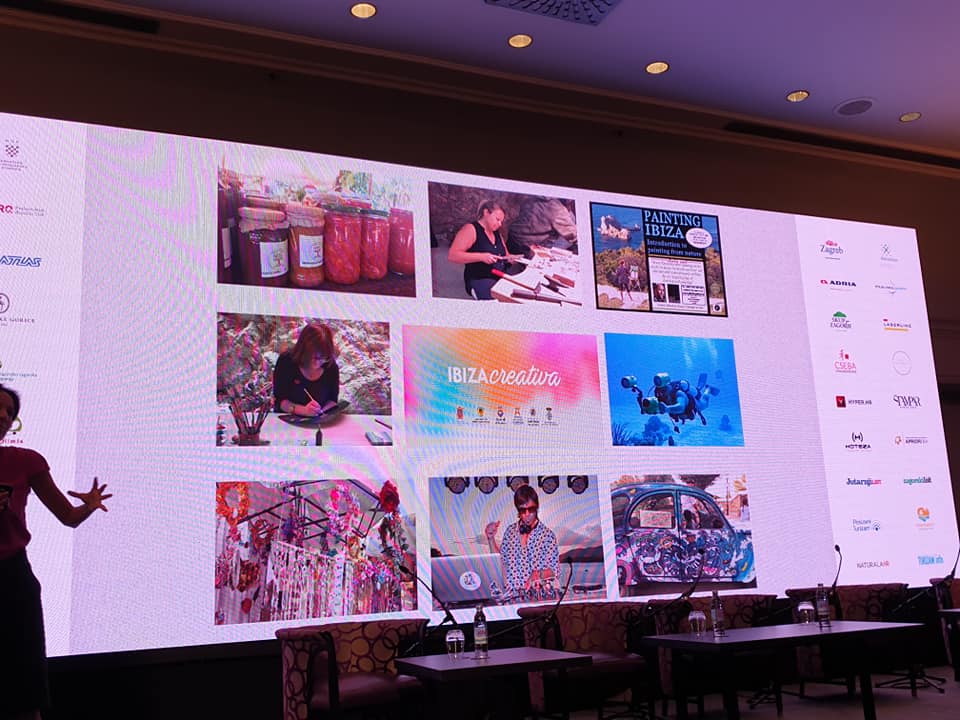
The two most interesting sessions at yesterday's conference (for me) were the Forum of Leaders: Tourism 365 panel with Bruno Walter from ITB Advisory, James Howarth HTL London, and moderator Kristian Sustar from Uniline. They were followed by Caroline Couret from the Creative Tourism Network, whose theme was Creative Tourism, or how to create authentic experiences that meet the new traveller's demands.
Couret had a range of impressive examples of how to create stories, bring out the authentic experiences of a region, and entice tourists into activities they might not otherwise have considered. The example of Ibiza Creativa was particularly powerful, as she showed how the famous party destination had succeeded in developing a whole other type of tourism, based on the traditions and indigenous products of Ibiza. And some interesting niche tourism based on the Ibiza party - lessons in how to be a famous DJ, for example.
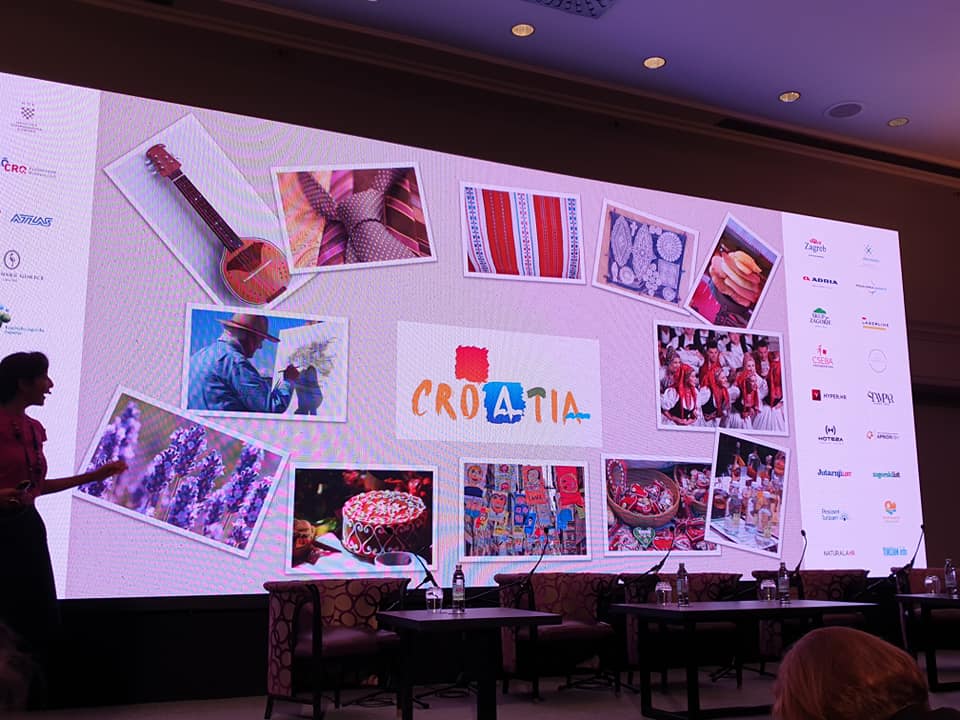
Couret also had some great examples of how Croatia can use its considerable intangible UNESCO heritage to create tourist experiences. Rainy day in Zagreb? Why not go and learn to make a tie in the birthplace of this iconic male style item?
If only there had been anyone in authority there to listen.
But the most interesting exchanges on Croatia's direction came from Brit Chappell, Austrian Walter and moderator Sustar.
Walter talked about how Austria has succeeded in developing its year-round tourism, which used to be seasonal, with guests more or less guaranteed. Then came the charter flight revolution, which meant that guests which they had taken for granted were now flying cheaply to more exotic locations. The development of the next generation of tourism started with unity at the village level and spread from there, with more regional consolidation. Today, he said, the population of Tyrol is about 800,000 and hosts 50 million overnights a year (half of Croatia's national total), and it has streamlined its tourist boards from 143 to 36. Interestingly, he said that the makeup of tourists in Austria is half foreign, half domestic. According to numbers he had seen about Croatia, the balance is 86% foreign and just 14% domestic. So focusing on the local market would be a natural strategy.
He also noted that 94% of Croatia's tourists are leisure tourists and just 6% business. A crazy statistic, chimed in Howath's Chappell, especially when you consider Croatia's potential and the fact that Sweden has 80% year-round hotel occupancy and is a conference Mecca, despite it being dark most of winter.
As always, the lack of flights was cited. As always, the only way to solve this problem is to stop protecting Croatia Airlines and make it easier for budget airlines. If we need a lesson in what happens when a country loses its loss-making national carrier, look no further than the phenomenal success of Budapest Airport, just 7 years after the loss of Malev (very informative interview with Budapest Airport CEO Jost Lammers here).
"When it comes to year-round tourism," said Chappell, "major challenges and problems that tourist countries and destinations face investments and expectations. If you want to have an offer for year-round tourism, it's in the destination need to have the infrastructure to handle it: airlines, accommodations, attractions which operate throughout the year, constant promotion, processes and dealing with guests. It all takes finance and it comes with an element of risk. It takes a certain amount of faith and determination to move in that direction."
Lessons from the Canary Islands, perhaps? A really impressive concrete strategy which has moved tourists beyond the sun and sea stereotype to bring in millions more tourists and engage them in activities they are looking for - check out the video above.
While both were fundamentally positive that the essential ingredients of Croatian tourism were healthy, the same could not be said of the direction, and Chappell - a self-proclaimed fan of Croatia and recently back from a family holiday in Dalmatia - described Dubrovnik with an adjective I have never heard used about the Pearl of the Adriatic before:
"If it carries on like this, in a few years, Dubrovnik will be unvisitable."
Unline's Sustar's moderation was a highlight. Rather than putting forward lame questions, he generated some lively discussions which are discussions which Croatian tourism should be having.
If there was anyone in authority there to listen.
An industry expert, he was clearly frustrated at the direction and leadership of Croatian tourism, telling the panel that while Croatia did indeed have a tourism strategy (our old friend, the 2013 - 2020 7-year plan, whose highlights include 30 golf courses, none of which have been started as 2019 draws to a close), "we have nobody to implement the plan, no leader in charge to create milestones."
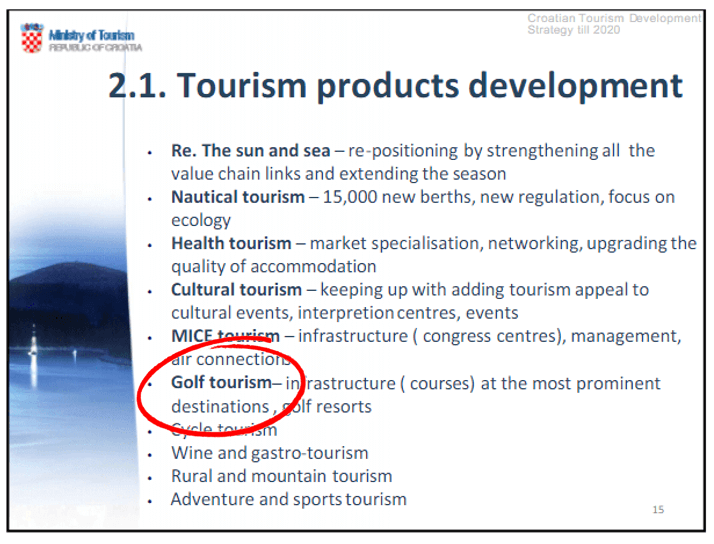
(the key points of the 2013 - 2020 plan)
"Would it be acceptable to bring in an outsider to implement Croatia's tourism strategy?" asked Chappell. He cited the example of the Bank of England, which is run by a Canadian, and his lack of Britishness means he can do some things a certain way. If a region has too much political or historical baggage, sometimes it is better to look abroad from the best solution.
Chappell also made the point that there were two truisms which were important to note. The first is that Croatia has a great and identifiable product - its coast, and that the Croatia 365 challenges are not unique to Croatia. They will have been dealt with in other locations. Rather than trying to reinvent the wheel, learn from and adopt best practices from elsewhere, buying in that expertise if necessary.
It would have been interesting to see those thoughts discussed with our tourism chiefs, but alas...
I am rambling on too much, but I wanted to mention one final topic from the last panel, From Goal to Realisation. Katarina Milicevic from thinktourism asked how many people thought that gastronomy was the most important thing in Croatia's tourism offer after sun and sea. Many did.
She then went on to explain a little about her social media research to show that while Croatian tourism thinks it knows what it is offering, it is not always very good at telling its international tourist audience. She cited some research on the social media activities of the Croatian National Tourist Board and its social media promotion. According to Milicevic, over a 12 month period, CNTB posted over 1,000 times on Instagram, but only 40 of those posts were related to gastronomy, while on Facebook, there were 400 posts, with just 15 related to food and wine.
If we can't tell our tourists what we have to offer, how are they supposed to know?
In a similar way, if we can't find the time to listen to the expert opinions of recognised international experts who have flown in to help us, how are we going to learn?
To learn more about the Croatia 365 conference, visit the official website.
Authentic, Innovative Tourism: Iva Silla Creating Magic with Secret Zagreb (Interview)
September 18, 2019 - Authentic, innovative experiences are plentiful in Croatia, but it takes the right person to bring them to life. One of the stars of fabulous tourism content, Iva Silla from Secret Zagreb, tells us a little more.
Zagreb has really come alive, both as a city and a tourist destination in the last ten years. And while Advent in Zagreb has perhaps become the capital's most recognisable brand in recent years, there is plenty to see and do all year round.
One of the pioneers of Zagreb tourism is Iva Silla, whose Secret Zagreb agency did things a little differently from the moment of its inception several years ago, and continues to evolve in new and innovative ways. Iva kindly found some time in her busy schedule to explain to TCN a little more.
I have never told you but you have been a hero of mine for some time with your ability to constantly come up with new and very innovative tours. Tell us a little about Secret Zagreb and how you got started.
Secret Zagreb started as a little blog, and over the years, it has grown into a collection of tours that explore the different faces of Zagreb.
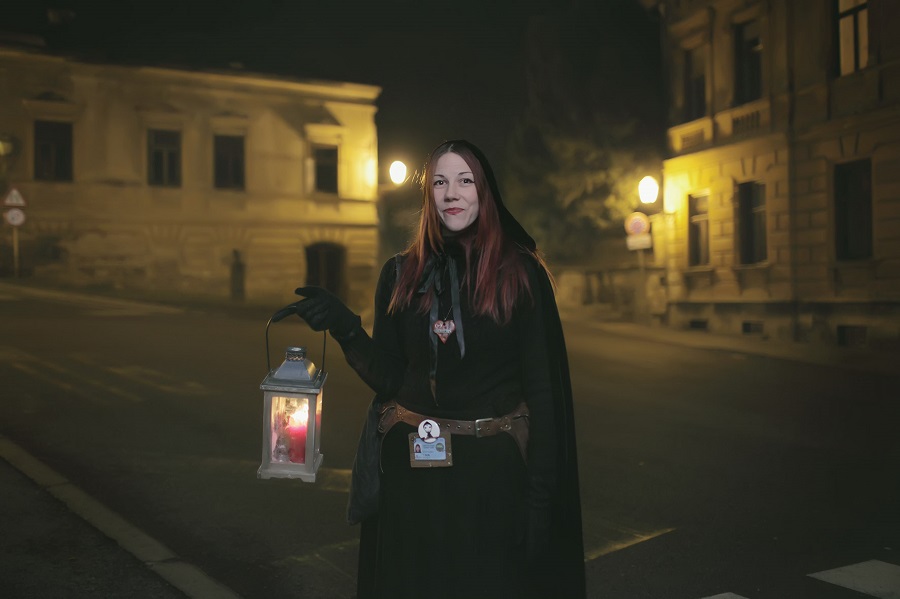
To tell you the truth, in the beginning, I didn’t really have a full picture or a true strategy. I just started off with an idea of a thematic tour and a certain determination. At that time, I wasn’t thinking of any possible obstacles or risks. Even if they occurred to me at times, I successfully ignored such thoughts. Today, I’m grateful for that blissful ignorance. When I look back, I don’t know what got into me, just holding on to a project, focusing on what I needed to make it work.
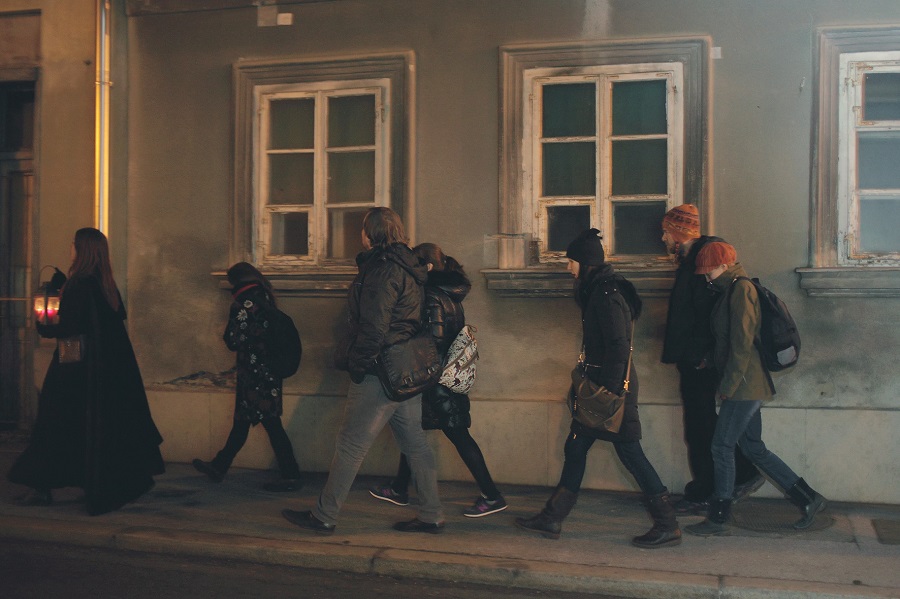
At first, I was observing how thematic tours work in other cities, and tried to figure our why no one really made a living out of thematic tours in Zagreb, even though some interesting tours already existed. At the same time, I wanted to prepare a basis, an online space that could later be used for the promotion and sales of the tours. That’s how I started writing the Secret Zagreb blog, and becoming active on some social media, especially Twitter, which was an amazing tool back then.
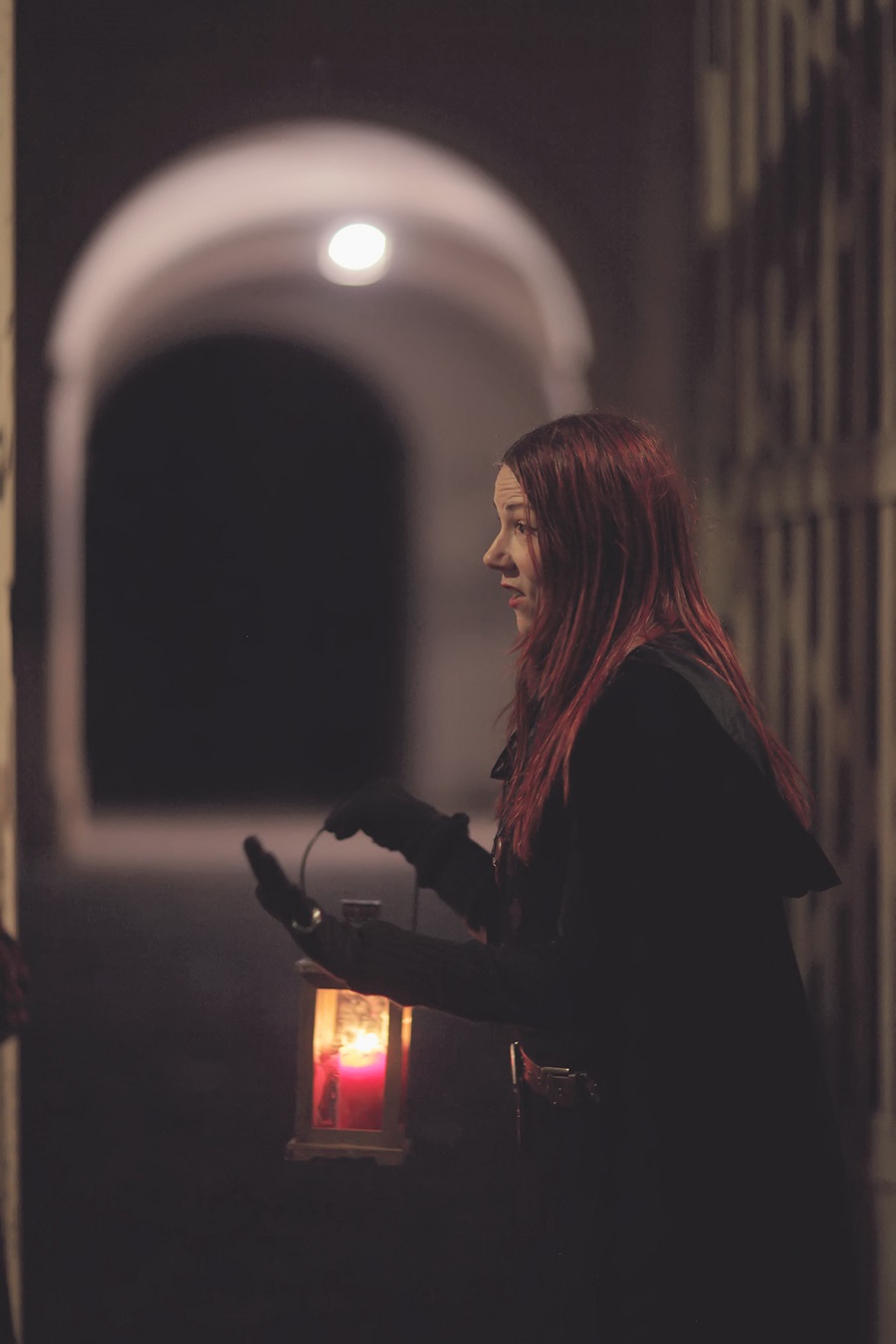
My first idea was to start a dark tour about a particular part of history. I still have some funny sketches from 10 years ago with the stories and the route all set up. While I believed I had the final product, I didn’t have a licence to work as a tour guide. So I went to get all the necessary licences and imagine my surprise when, during the course, I found that another company had just started a tour of that same topic! That tour doesn’t exist anymore, but it was a great lesson even before I started. The first thing I learnt is that I would regret it if I kept setting my creative projects aside. More importantly, that the situation at the market changes fast and unpredictably... and so must I.
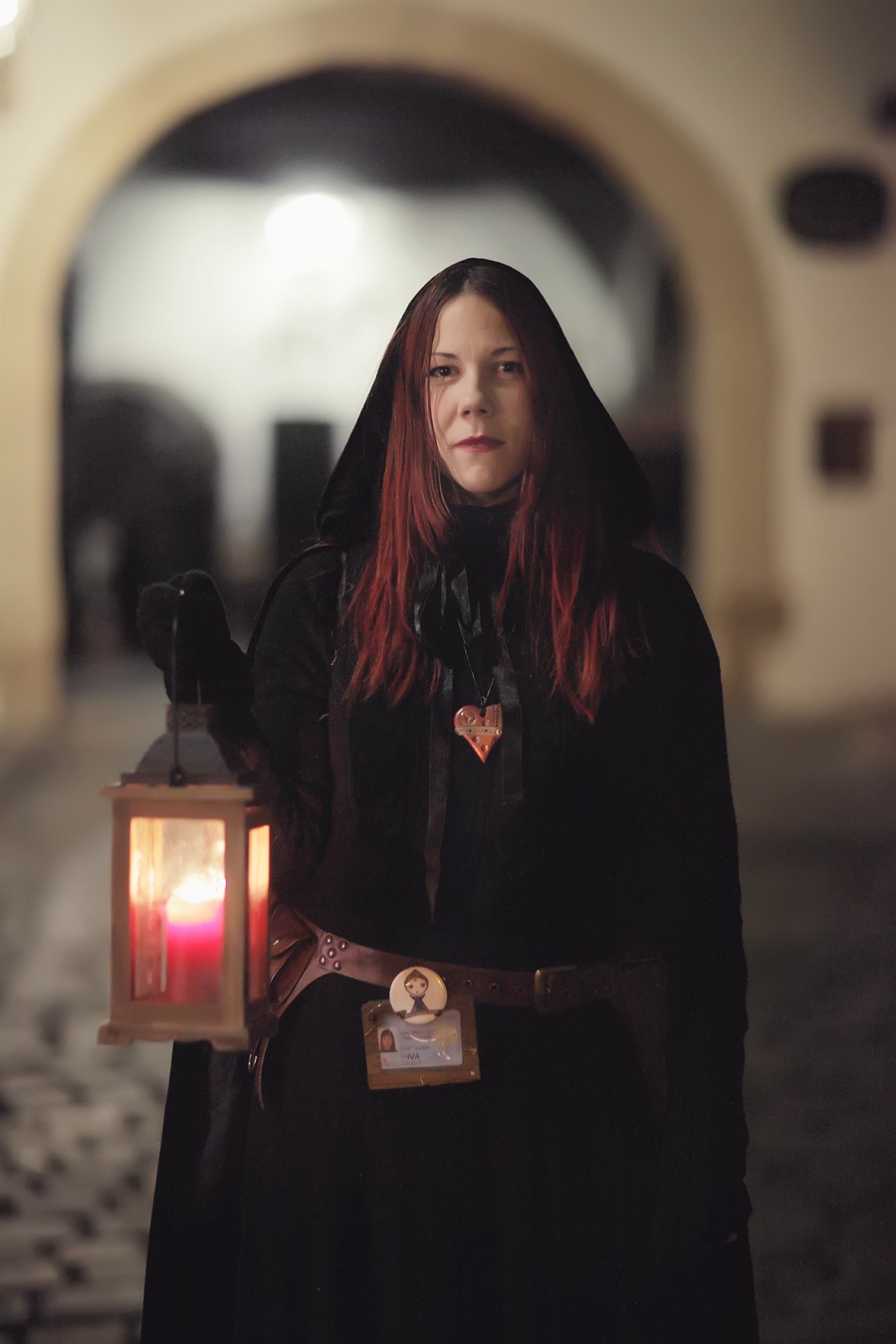
The decision was already in my mind that I was going to start storytelling city tours. I just couldn’t start with something that wouldn’t be original. That’s when I realised that I already have so many stories collected, old legends and spooky tales, that there are patterns in my town, pieces of puzzles just waiting to be put together into a charming whole. So I waved farewell to my first project and started crafting two new magical tours – Sleeping Dragon and Zagreb Ghost Tour (now known as Mysterious Zagreb).
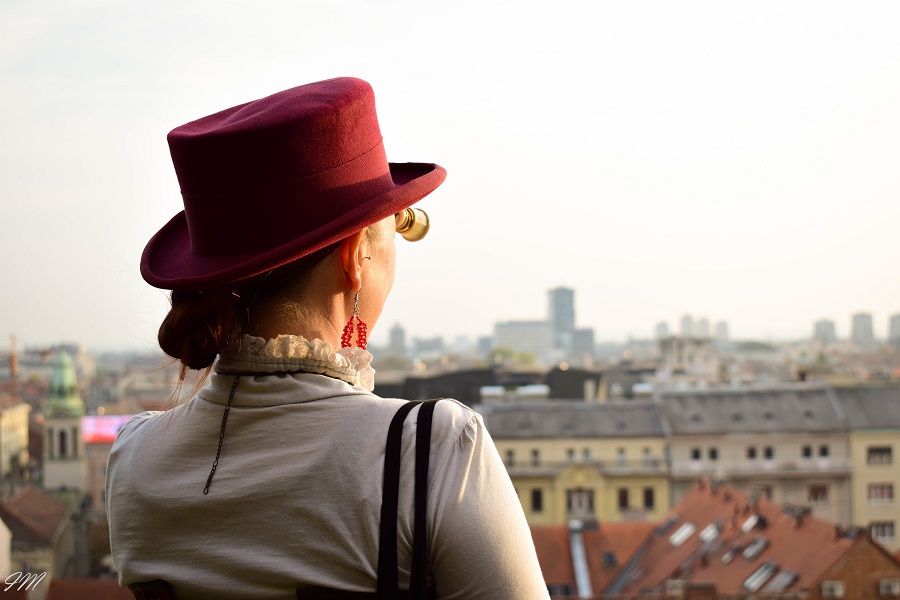
At first, I thought it was going to be a side-project. In the first months, while I was still working on the content for the blog, I realised that wasn’t possible. I needed to dedicate myself to it to make it work. So I did, I quit my job, opened a business and simply started the tours. The first tours were in the month of June. Till the end of that year, I earned around 20.000 kunas gross. This wasn’t really in tune with my original “business plan”, where I assumed it would be easy to have 7 tours a week, times 15 people, times 85 kunas a ticket, which was supposed to be more than 8.000 kn a week. Very realistic to start with, don’t you think? But when I realised that I managed to earn money out of something that’s been there all the time… the stories of my home town and a little spark within... that was so incredibly motivating and it still is. When the first ticket was sold to Barbara, I was out of my mind. It was so surreal.
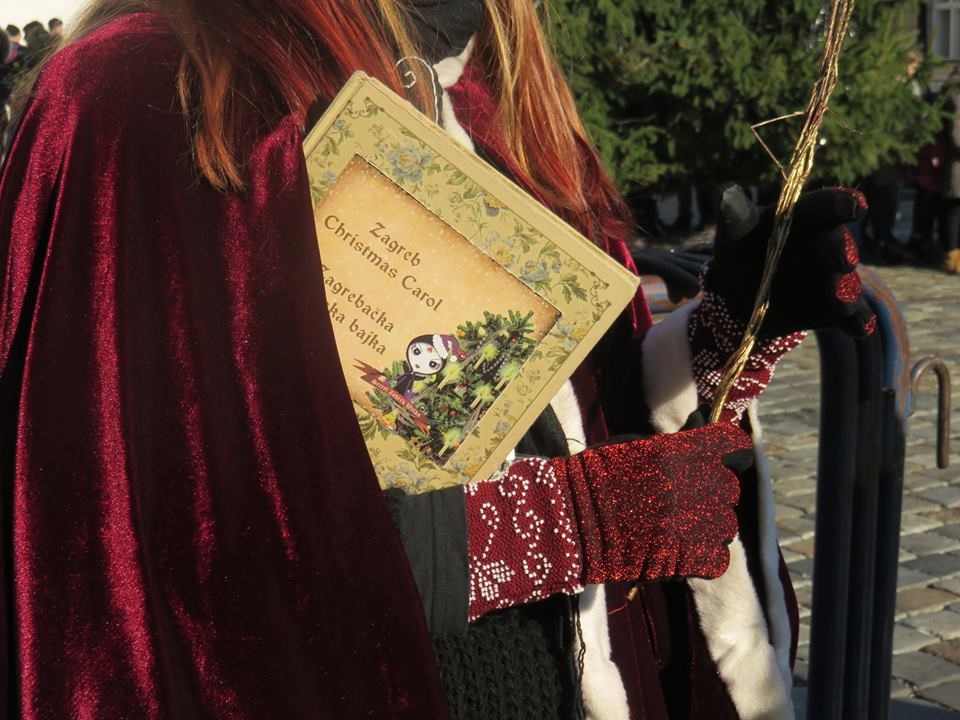
Your tours are a little different to the normal agency. Give us a flavour of what is on offer?
Secret Zagreb started with the mysterious-themed tours, based on local lore, legends and the secretive side of the city. I soon realised that seasonal tours, just as any seasonal event, make a great promotional tool. In the very first year, I already had special Halloween tours and the Zagreb Christmas Carol. The latter was inspired by the Dickens' Christmas Carol and the fact that we just don’t have time to think of the real Christmas spirit. By remembering end-of-year customs, winter troubles and fun times of old, we’re giving a deeper meaning to the Christmas festivities that Zagreb has become famous for. There’s not much going on in Zagreb in February, so I had time to develop a Valentine’s special tour for locals, Dark Romance in Zagreb. Some tours are costumed, all of them are wrapped around a certain topic.
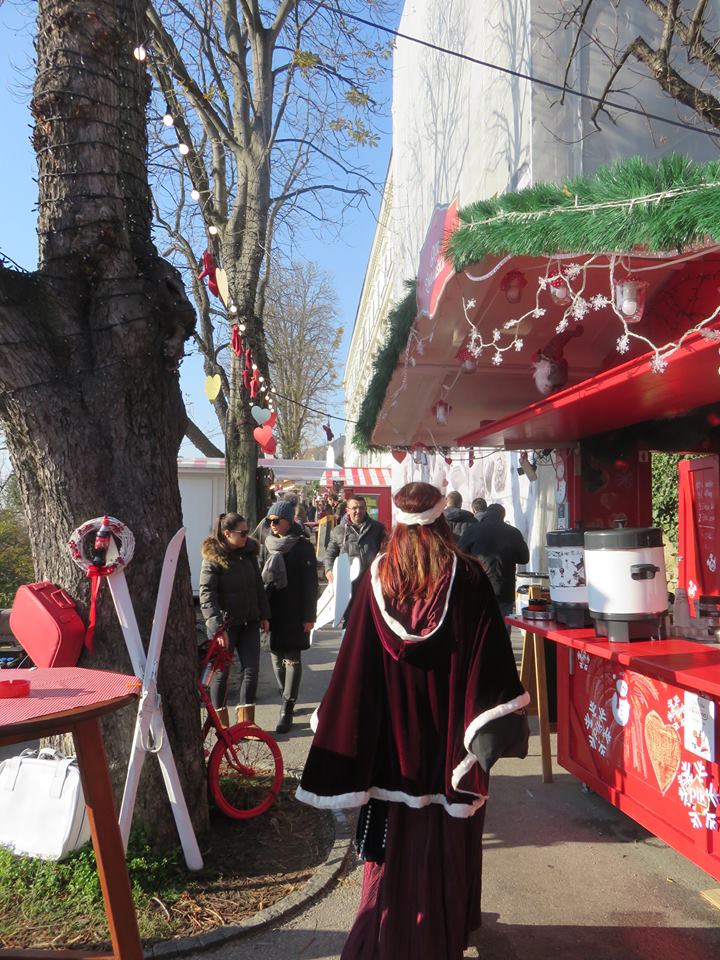
Since 2015, gamified tours came as an innovative addition to the Secret Zagreb offer. It was quite challenging and very fun to set up tours that would combine true history with riddles. They’re different from other gamified activities because they still have a human component – they rely on a guide, who makes the whole thing more entertaining and helps turning carefree fun into a learning experience.
My original intention was to show that Zagreb has so many hidden memories worth sharing. But, the stories that were “secret” when I first started, all of a sudden became part of many other tours. What used to be unexplored seven years ago, is now recommended in every other guide book or app. People started rediscovering the city with the rise of tourism, always searching for new perspectives and locations. Information about Zagreb and its little treasures became more accessible.
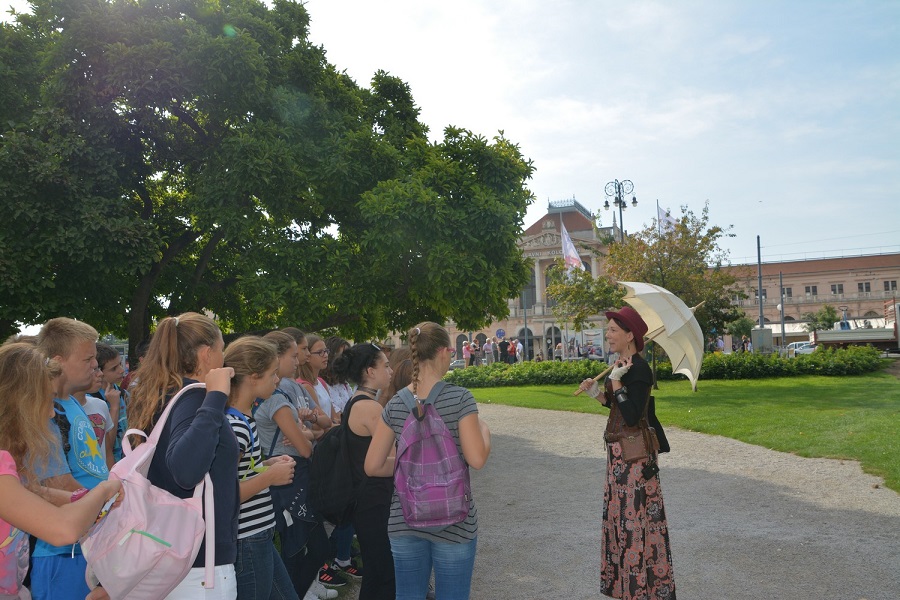
That’s when I started going even further off the beaten track. Not just in terms of stories, but by creating tours with a very unexpected route. The Real City tour or Into The Forest are examples of that. As you can imagine, these are not the most visited tours, but these are the ones where I can really see the transformational effect on the visitors. They find true a connection with the city after wandering in the woods of mount Medvednica, or between the grey buildings of Novi Zagreb.
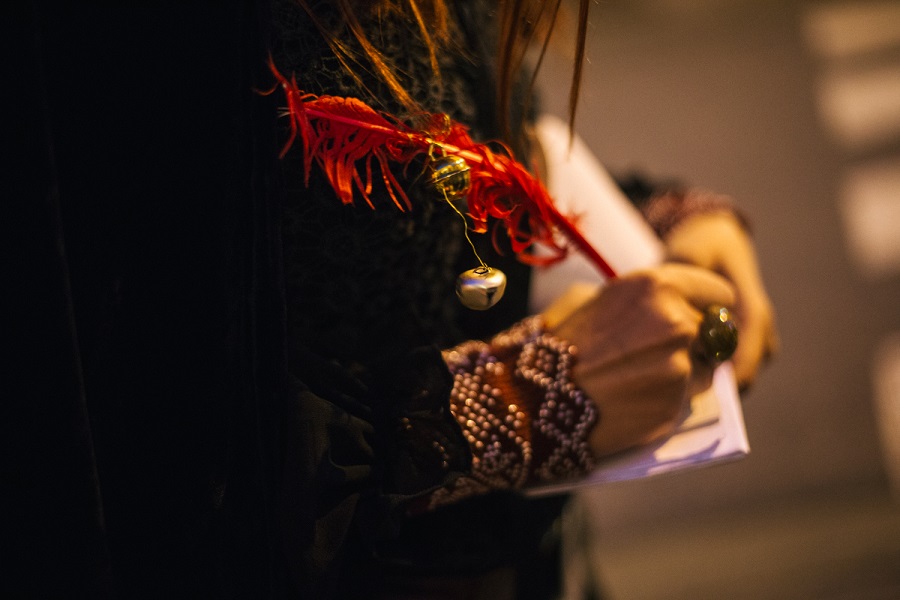
The latest tour, Badass Women of Zagreb, is currently my favourite one. I wanted to create something meaningful and show that tourism doesn’t need to be all about pure entertainment, that each of us has the power to educate, inspire and to move hearts.

Now I realise that it wasn’t just about expanding the tourism routes, as I believed back then. It was about capturing the spirit of the city and help others appreciate it, not just putting it on sale.
Zagreb is perhaps one of the fastest changing destinations in Croatia, especially with the success of Advent in Zagreb. How would you assess the changes since you started Secret Zagreb/ Are you happy with the current direction of Zagreb tourism?
It has affected me and Secret Zagreb in many ways, yet it was easy to see it coming. Zagreb seems to be going in the exact same direction as many other European capitals and popular city-break destinations, so it hasn’t been very hard to predict what was going to happen.
The number of tourists here is growing, and so is the variety of the offer. Except for the months of January and February, there’s always something happening for us who work in tourism – conferences, school trips, international project meetings… And then Advent, which has become so popular. I’m especially thrilled to see people from other continents coming to Zagreb in December. Even though weekends are the craziest with all the day trips from nearby countries, there are people who travel from far away to enjoy Zagreb at that time of the year.
Another big change that I’ve noticed, is a rise in number of people that stay here for a week or so. I’m really eager to see the statistics for this year to see if what I’ve noticed is true, or just a coincidence. This year, I’ve met so many people who decided to stay in Zagreb for a whole week or more. And they always say they’re here for “only a week”, and they will have to come back.
It seems that the overall attitude still prevails, that the tourists are welcome and even that their increasing number is a great sign of the city’s development. However, local tour guides spend so much time with both tourists and the locals from historical parts of the city. We’re probably the first ones to notice when opinions start clashing. For a few years, I enjoyed hearing lovely comments by the locals. Everything was all roses – we witnessed people getting to know their own town again, being proud of the interest it aroused, enjoying the company of the tourists…. But last Christmas and this summer season, for the first time I started noticing increased annoyance amongst the locals. This is not serious yet, and I hope smart strategies will prevent true irritation from happening. It would be really sad if we weren’t able to turn the knowledge that is out there, from theories to examples of other destinations, into our tool to build a sustainable destination.
I personally believe that the locals have the right to claim their neighbourhoods and their cities. I once read an article about Amsterdam, and one simple thing really hit me: a local resident said that she just couldn’t stand seeing that same tour guide in front of her doorway with the same punchline each day anymore. Gosh, I thought, am I that tour guide? Is Zagreb slowly catching up on Amsterdam? It got me thinking and eventually, I limited the number of the tour participants even more, especially for the night tours that can feel really invasive for the quiet neighbourhoods.
You know that saying “the road to hell is paved with good intentions”. I think it literally describes tourism. Each of us is a little tile that makes the journey to the destination look inviting. Everyone wants to do something good, something valuable. But when you finally get there, you realise we’ve all turned the place into fabricated hell, and have lost its authenticity that used to make it heaven on Earth. Let’s hope this is not going to happen to Zagreb.
I think that’s what makes various urban civil initiatives that are “re-claiming” the city very important. And education of each and every person who is involved in tourism. Too many people are involved, without the awareness about the long-term effects. It’s important to put tourism in the service of heritage, and not the other way around.
Authenticity and experiences are words which are often used in tourism. Do you think Croatian tourism has enough authentic experiences, or is it still over-reliant on the sun and the sea?
I actually believe that the sun and the sea are pretty authentic:) Authenticity is often about the simple stuff with deep meaning. Our incapacity to preserve the simplicity is striking. All we need is to recognise the spirit of destinations and pass that feeling on to our guests. It’s a shame we often lose that feeling in the quick, “easy” and very temporary money.
This will sound really cheesy, but I believe that the authenticity is in our hearts. We can’t make people create authentic experiences if they’re driven by the desire for instant business success. What we could do, is give full support to the ones who keep the authenticity alive and carefully work on developing destinations. All the tourism bodies should work towards that.. I’ve seen what it looks like to have a passionate person with a vision as a head of a small tourism board. We will easily blame the destination management for various faults. However, you have to be a super-human to rise above all the mud that surrounds you, be able to ward off all the opinions that are not in tune with your destination’s strategy, and follow the goals. I don’t think that anyone can be prepared for what awaits for you as a head of a local tourism board, especially if you’re trying to preserve the authenticity. It’s difficult to set heritage and authenticity as a priority even if you’re one of the “rich tourism boards”, because who cares about that when money’s pouring in one way or the other. It’s even more difficult for a small tourism board when they believe that this could actually be the way of development.
With the tours you have put together, you obviously see the opportunities from creating original content tours. How have your clients reacted, and how much more potential is there here to offer authentic experiences?
All I offer is a little shift in perspective in the hope of revealing something that the guests wouldn’t realise themselves. There’s still a lot of potential, but there are also many lost opportunities. It’s hard to offer authenticity when we try to fabricate it. We’re reading about new designer shops, at the same time letting the old artisan shops shut down forever under the radar. We’re talking about the “new creative awakening” of Zagreb, completely ignoring the city’s history of creativity, serious art movements, not even noticing that we’re slowly losing the tradition of social engagement. It’s so hard to keep our focus even here in the capital, where there should be most opportunities. I’m the first one to fail here. I have the desire to promote some special pieces of the town’s memory, but I don’t always succeed in delivering it to the market as I’d love to.
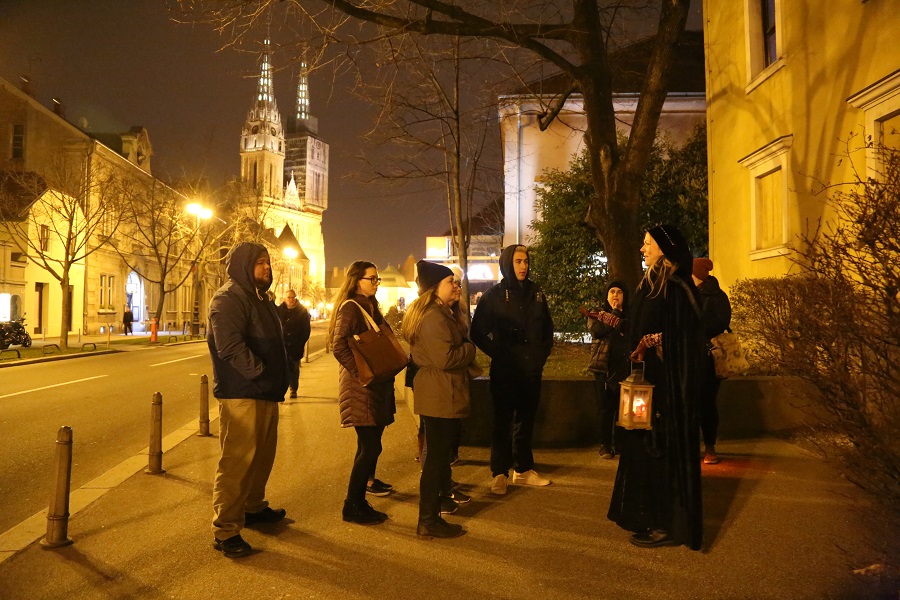
Right now, on TripAdvisor, there are 190 tours listed for Zagreb. That’s a lot, and it’s hard to dig through all that and discover what’s truly authentic. However, I think there’s still space for new tales, it’s just the matter of finding your way to the market. Airbnb Experiences could be a good platform to offer something new. There are some very unexpected creative experiences offered there.
A few years ago at a Zagreb conference, you showed a wonderful video of a Belgian pig walking tour as an example of innovative tourism using the traditions of the location. Can you give us a few examples (not your own agency) of similar things that you have seen in Croatia?
Innoguide Experiential BE from Copper Views on Vimeo.
Haha, the pig tour was so revealing for me, too. The point is, not everyone will come to my village. But my village doesn’t have the capacity for everyone. People who do come, on the other hand, will be able to experience something very authentic. There are so many good examples throughout Croatia, I’m going to give a few that I’m personally familiar with.
Just a few weeks ago, an enthusiast Tihomir Želimorski organised an event called “Šetnja kroz naivu” with the support of Central Podravina tourism board in a village of Hlebine. Soon enough, the whole community joined - many households participated one way or another, helping the visitors understand that art is a part of who they are. This is a wonderful start of something that could turn into a true art destination in the future. I’m personally so enchanted with Podravina right now, that I can’t help it but mention at least one example from that region.
An amazing example of heritage, community and tourism, working together, is an event called Tunafest in Bakar, organised by the Bakar Tourism Board and Via Mea agency. So many locals – producers, performers, folk associations, business owners, get together to put up a very authentic event for big organised groups of tourists.
I really admire Jelena Holenko of Lynx and Fox, who is doing such an amazing job with her tours in the region of Gorski Kotar. Through her passionate work on social media, I feel she is the single force that’s directing the attention to her destination. We’ve met less than a year ago and we already had a chance to work together on some educational projects. But I remember first noticing her online, thinking “What is this? Self-destruction next level:)” It must be so difficult to reroute people to come to Gorski Kotar, and what an organisational task it must be to set up each of her tours. When anyone of us, who works to keep the local heritage alive, feels down and not sure about what we’re doing, just one click on Lynx and Fox, and we find Jelena, bursting with energy, creating connections throughout her region, her desire to make us come and visit every single incredible sight, and meet every single person who works hard to keep a part of heritage alive - that’s pure inspiration and a drive for all of us.
I also love Culsperience project that clearly points fingers to what’s really authentic. I appreciate that it’s focused on continental Croatia.
An Istrian town of Savičenta is an example of passion and focus growing big and community working together towards greatness. It took time, and it’s still an ongoing process, but for years, this small town has been developing around the identity they agreed on. If a place of a few hundred residents is becoming a sustainable destination, it wouldn’t hurt if every small city council meeting should start with presentation of that example.
These are just a few tiny examples, I deliberately picked different kinds to show the variety. I’ve had the privilege to meet so many inspiring people who care. I met passionate guides from Šibenik whose eyes literally start shining with pride when they speak about their home. Or warm heritage interpreters from Istria who keep the lost languages alive.
Artists, tour guides, reenactors, tourism board and local authorities employees, vendors, farmers, artisans, designers, promotors, journalists, food producers, taxi-drivers, captains, museum curators, park rangers, to name just a few…. there are so many beautiful dreamers eager to stay here in Croatia and make visitors feel at home, too. Most of them are desperately trying to build a life around that passion, but too often, after years of trying, they eventually have to wake up because the big majority and a big part of the system are not supportive enough and don’t have the same priorities. But there is a silent army of incredible people growing stronger, rising deep under the superficial layers of concrete and big tourist numbers, and when it bursts through, it’s bringing the heart of the country back to the surface, all the breath-taking treasures and heart-warming gems ready to explore.
Are the needs and wishes of tourists changing in recent years? What advice would you have for someone thinking of opening a tourism agency in Zagreb?
They are changing so fast. You just can’t stand still and have to keep moving and planning new things. I think, just like in any business, it’s important to have some kind of a higher personal goal. And your own Barbara – the person who bought your first ticket. Mark down those tiny moments of gratefulness so you can go back to them.
Otherwise, the energy level is going to drop eventually and you won’t be able to stay in touch with yourself. My little trick to keep myself going is to keep my sight clear. Is there anything I will regret if I don’t try it? If there is, you can be sure that I’m working on it right now. There is a book by the genius Nela Dunato – The Human Centered Brand – if you’re ever in doubt where you’re going, this piece of wisdom will take you back on track.
As for the ongoing projects – keep track on the market, in your town, country, and similar destinations and projects abroad; react to changes as soon as they start happening if you were not able to predict them earlier.
I like to simplify things in my head, so when I need to double-check what I’m doing, I think of it in terms of tattoos. Would I like to have my project logo tattooed on my skin, so I can explain to everyone what does it mean to me? If it feels more like a faded teenage tattoo ready to go under laser, it’s time to turn pages.
Tourists’ expectations keep changing, too. There is a rise of “experiences” all over the world, and many tourists simply expect to be entertained and ovewhelmed with fast experiences, they are not on a quest for a more profound connection. It happened to me that I needed to change who I was aiming at as clients. It used to be anyone, because anyone who came to Zagreb was already off the path and interested in deeper exploring. But with the rise in numbers, I have to start being more focused in marketing, at the same time “fighting” for my desired clients with the increased number of tours in the city. It’s an ongoing process.
People usually start with one idea and they have a feeling once it’s out there, the job will be done. But that’s just the start.
Since none of us is prepared for the market that changes so quickly, especially if we’re working in a creative field where your own product is an innovation so you can’t really predict anything, we all require more life-long education opportunities and some kinds of vanity-free hubs that will give us a chance to create collaborative atmosphere.
Collaboration is another important thing that I haven’t even mentioned yet. Working together, creating something in teams, learning from each other, exchanging experiences - even for great individualists, this can be truly transforming, and of course, very important for the community. I have to mention the association of tour guides Mihovil from Šibenik - some very strong and charismatic personalities put all their differences aside and got together to create a walking tour called “Mračna strana Šibenika” and many other projects that depended on their collaboration and mutual support. That’s other-wordly, an example that we should all strive to.
I have personally had the pleasure to collaborate with so many people through all these years. Sometimes it was successful, sometimes not. But, each and every one of them has left a mark and made a significant difference. We need to be ready to accept other people’s opinion, ready for failure, just as we are for success, take the best out of it all, keep moving and creating. Cherish the beautiful moments and just be true to ourselves and the destinations we’re breathing life into.
You can learn more about Iva's incredible tours on her Secret Zagreb website.
Tonci Tadic's 10 Myths of Croatian Tourism: Written in 2009, Still True Today?
September the 16th, 2019 - Although the article which covered the ten myths of Croatian tourism was written by Tonči Tadić a whole decade ago, all of his ten points (or rather, myths) are still very relevant, suggesting that little has changed, if anything at all.
''I consider it my duty to warn people about the fact that tourism revenue is much more modest than the typical perception of it is, that foreigners make much more money on tourism than Croats do, and that tourism, by all relevant indicators, doesn't affect the significant reduction of unemployment at all, nor does it encourage the development of the country more than some quality industry would,'' Tadić initially wrote for Politika.com.
In the 1970s, you could easily become a hotelier in France if you agreed to a French project, with a French contractor, the use of French equipment, food and drinks, the employment of a French workforce and the proper payment of taxes to the French state.
In the case of Croatia, Tadić thinks that we have little other than the following ten tourism myths:
Myth 1: Tourism is a magic wand that will solve the unemployment problem in Croatia
Unfortunately, Croatian tourism is still almost only a seasonal activity. The self-construction of apartments is also a myth in terms of self-employment, because the return on investment is very slow and these apartments are empty for most of the season. The development of Croatia in the direction of tourism alone means that the most desirable occupations in Croatia are that of a trained waiter and a trained maid. This is the path to the complete de-industrialisation and de-intellectualisation of Croatian society.
Tourism should be seen as the icing on the cake of the entire economy, of which part of the product is marketed through tourism. It's a mistake to think that it is incompatible with production, of course, in an environmentally friendly manner. If that were the case, there would be no tourists in Italy, Austria, Germany or Japan!
Myth 2: Croatia has a high tourism revenue
The Croatian National Tourist Board has a practice of defining the success of a season by counting the number of overnight stays realised, although nobody in Europe does that anymore. There, [in Europe] long after the season, they count euros and not overnight stays. In our country, it's different because the Croatian National Tourist Board generates income from sojourn taxes, so for them, only the number of overnight stays is important. But estimates of real tourism revenue vary. All of the research shows that the average tourist spends a maximum of one month's salary when on holiday and not a cent more.
Myth 3: Tourism is used to market local products
It is a notorious fact that the import of food and beverages for tourism is increasing year after year, in other words, Croatian tourism contributes to the development of agriculture in Hungary, Italy, Serbia, Macedonia, etc., but not in Croatia. The hotel equipment is also imported because we've destroyed the domestic production of furniture and appliances. Unfortunately, Croatia does not have any mechanisms to promote its domestic tourism products, except through slogans before elections, and nobody remembered to resort to lending to tourism companies in order for them to purchase only domestic products.
Myth 4: Tourism is overburdened with taxes
Nobody has explained to a large number of people in tourism that this is a low-accumulation branch of an economy where there is no quick profit. This is why today, everyone is whining about the heavy tax burden. Croatian tourism simply needs to be brought into the same business environment as other countries in the Mediterranean have done with theirs. Since 2005, a 10 percent VAT intermediate rate has been introduced for tourism accommodation - when it comes to our competition, the rate is 7 to 11 percent.
There is room for a shift in converting sojourn tax into an extraction from income tax. Anyway, tourists and locals don't get anything from it. Why should one kuna from sojourn tax not go towards improving healthcare in the season?
Myth 5: Croatia is an expensive destination
It's interesting how this story starts every June, when the "June slump" is usually used, ie, there are fewer overnight stays, because the pensioners return from their holidays in the preseason and the school year is not over yet - when the data from the preseason is analysed. That data shows that only Turkey is cheaper than Croatia. But the real question is, what do we offer for those prices that we raise by 10-20 percent per year, but with the same offer? Nobody is foolish enough to throw their hard-earned money at our desperate bid.
Myth 6: Tourism preserves the environment more than industry
Tourism leads to a lot of human traffic, it requires a lot of space for construction and creates a burden for infrastructure. The environment can also be guarded by environmentally friendly industries or by fisheries and mariculture. The current element in tourism erodes the most valuable resource on the Adriatic, which is unpolluted and undeveloped space both on land and at sea.
Disruptive landfills, unregulated sewage, traffic collapsing, not to mention water supply problems, contribute to the destruction of the environment and the discomfort of residents. No other branch of the economy would tolerate it, but with tourism then it is tolerated!?
Myth 7: Tourism, especially the elite type, brings in the fastest development
Just as the slogan of industrialisation + electrification = communism used to be sold, nowadays the saying goes: marinas + golf courses = elite tourism, and now that's being sold.
However, it's forgotten that this is not only achieved through the construction of a golf course or just the construction of marinas, but through a complete offer. What do we offer that "elite tourist" when he leaves his "elite hotel", his "elite marina" and his "elite golf resort"?
In addition to that, how is it possible to plan golf courses along the coast and not, for example, do so in the Dalmatian hinterland? I'm afraid that golf actually serves as a cover-up for building hotels along the grounds. I'm not against marinas either. But is it not better to bring yachts to our ports in our towns on the coast and islands and provide income to their inhabitants (but first to secure moorings for the local population). It goes without saying that those wishing to moor at our ports should pay some kind of "monumental rent" for this luxury.
Myth 8: All tourist facilities should be privatised
It's absurd to claim that the state is a bad master and that it should withdraw from tourism, and on the other hand, seek a stronger involvement from it in subsidising tourism. If tourism is profitable, why should the state not benefit from it? And if not, then why should it subsidise a private individual? If the problem is incompetent management, then that needs to be changed, and that doesn't require a new owner. It is even more stupid to bring in a private owner, and a foreign owner at that, and then bail him out when he gets into too much debt, as the state does for the ORCO group in ''Sunčani Hvar''.
Myth 9: Tourism should dictate spatial plans
Under the dictates of tourism, Croatian ports are slowly losing their operational coast. Every place on the Adriatic today is planning a marina, but not an alternative communal port for the locals; it's planning a hotel or apartment complex, but not a factory. Construction firms, law firms and real estate agencies are the only ones that have a quick return on tourism when building a hotel. However, it's absurd for Croatia that the development of tourism is not dictated by the Croatian state, nor the Croatian economy, or even the tourism companies themselves, but by construction lobbies.
Myth 10: Tourists are not interested in Croatian heritage, but want an "international offer"
Tourists, on the contrary, want exclusivity and an indigenous offer.
After all, the offer is no different from the competition, so in that variant, the only way out is to reduce prices. But we still don't have an indigenous Croatian brand in our diet or accommodation, apart from the kabobs and skewers.
When and where did you hear about a "Croatian restaurant"? There are Italian, Argentinean, Spanish, Japanese, Chinese, Indian, Hungarian, French, Greek restaurants in almost all EU countries, but you will hardly find anything called a Croatian restaurant. Nor do we have our own indigenous food supply. When you're in one of these countries, you know which dishes to try. But which dishes in this country are declared as Croatian national dishes in our restaurants and in our tourist offer?
Croatian Nautical Tourism Bypasses Slump, Charter Industry Grows
The season in the marinas, which goes on for as long as the weather is nice when it comes to Croatian nautical tourism, has remained at the level of last year, which was excellent.
As Poslovni Dnevnik/Marija Crnjak writes on the 15th of September, 2019, unlike Croatian "terrestrial" accommodation, nautical tourism didn't experience any particular slumps this season. Plus, the number of overnight stays achieved in the nautical tourism sector is higher than in all other segments of Croatian accommodation, and the number of charters, or the number of vessels available for rent and the transporting passengers, has increased.
The impression from Croatian marinas this year is that their season, which, as previously mentioned, goes on for as long as the weather conditions allow, has remained at the level of last year's season, which was excellent.
"On the eve of the season, we were cautious because of the announcement of the return of our competitors from Greece and Turkey to the market, but we're pleased that the peak season is over," said Sean Lisjak, president of the marina association of the Croatian Chamber of Commerce (HGK), while awaiting the official results from Croatian marinas.
Everyone who had the impression that sea traffic on the Croatian Adriatic was increasing this year was right, statistics confirm. In the registers of the Ministry of Maritime Affairs, Transport and Infrastructure, in the period until the end of August, a total of 750 vessels (both cargo and passenger), 126,000 various purpose boats and 3,100 motor yachts were recorded in Croatian waters. An average of 60,000 foreign yachts and boats sailing to Croatian ports is still to be added, the aforementioned ministry has noted.
By the beginning of September 2019, a total of 353.7 thousand boats were registered in the area of supervision of all eight harbour master's in Croatia, an increase of 2.17 percent over the previous year and about 0.13 percent more newly registered yachts. When it comes to Croatian nautical tourism, the number of boats for charter this year increased by 7.5 percent, from last year's 8,256 up to an encouraging 8908 boats, while the number of passenger boats slightly decreased, down to 2,208.
There were 3,115 yachts on the Croatian Adriatic, of which 2,328 were chartered, which is an increase of about 150 yachts.
Most boats were rented in the Split region, and their number increased by two hundred boats this summer (2,513 in total), followed by the Zadar area, where a hundred or so more boats were rented this summer (1,619). This year, 1,352 boats were rented in the area of the habour master's office in Rijeka, followed by the Šibenik and the Istrian regions, while the least boats were rented around Dubrovnik, although there has been an increase of about 100 vessels (706 in total).
Croatia is known as the world's largest charter destination, which is a label that will stick and continues this year with this continued growth in traffic.
According to the ministry, by mid-August, a total of 2,850 yacht and boat rental companies were registered on the Croatian market.
The increase in nautical traffic was also recorded by the Croatian National Tourist Board (HTZ), whose eCrew boat registration system showed a three percent increase in arrivals by the beginning of September and an eight percent increase in terms of overnight stays.
Make sure to follow our dedicated lifestyle and travel pages for much more. If you're interested in sailing in Croatia, give Total Croatia Sailing a follow.
How Croatian Tourism Uses Statistics to Claim Success Where Failure Exists
September 14, 2019 - Croatian tourism chiefs are claiming another successful season, and using a rather interesting statistic to illustrate their point.
It has been a summer of statistics...
My favourite so far was Rita Ora's claim to have had a blast in front of 60,000 fans in a stadium which holds just 9,000, a concert which the Zadar Tourist Board hailed a big success:
This is definitely the direction in which we continue to develop in tourism.
The people of Zadar, left to foot a bill of almost 100,000 euro (on top of the 60,000 euro paid by Zadar Tourist Board) for a concert which was a totally disorganised flop attracting just 6,000 fans (including at least 900 free tickets for media etc), might disagree.
But with the tourist board declaring the event a success, and the global star bigging up the numbers to improbable levels, history will record another majorly successful event in Croatian tourism.
And so to the wider picture of Croatian tourism statistics. After all the doom and gloom of the Croatian media (and TCN) about a terrible season, the Croatian National Tourist Board announced a 5% increase in arrivals and 2% increase in overnight stays from January to August. Having travelled the length of the Dalmatian coast with zero waiting times at borders, tolls or ferries for the first two weeks of July, and having documented an empty Jelsa night after night after night, the announcement was indeed a surprise. Several friends in Zadar messaged me to say how shocked they were about the 10% increase in Zadar, having observed a much emptier destination than usual this year. But, as one quipped, "If Rita Ora can squeeze 60,000 into a Zadar stadium built for 9,000, anything is possible."
But it was another statistic claim by Croatian National Tourist Board director Kristjan Stanicic that caught my eye, a classic example of telling a small part of the story to suit the current narrative.
Stanicic stated - quite correctly - that Croatia had risen 5 places since 2017 in the Travel & Tourism Competitive Index to 27th in the world, which sounds like a great achievement.
Except it isn't. And not only that, Croatia's 2019 rank on the global index rates as a total failure of the key development goal of the Croatian Tourism Ministry's 2013 - 2020 plan. As I wrote recently, the same strategic plan 6 years ago which envisaged 30 golf courses by next year (none started yet), progress in developing medical tourism (no taskforce committee yet 6 years into the 7-year plan) - the list goes on.
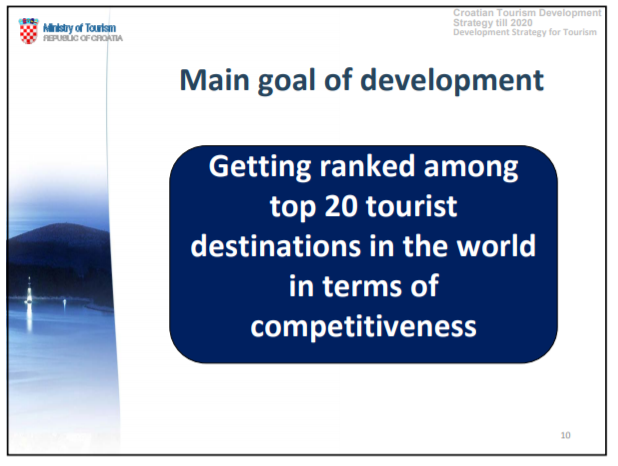
The overriding goal was to get in the world's top 20 by 2020. As the index only comes out every two years, Croatia will end at number 27, hardly a stunning success. In fact, a little like the 7-year plan overall, a rather large failure.
But Director Stanicic's assertion got me thinking. If Croatia had only risen to 27 in those 6 years of dedication to the cause (from 35 - by comparison, Greece, which did not have the same stated goal and whose country fell apart halfway through, rose from 32 to 25), who was above Croatia? Who was more competitive in tourism in the EU, for example?
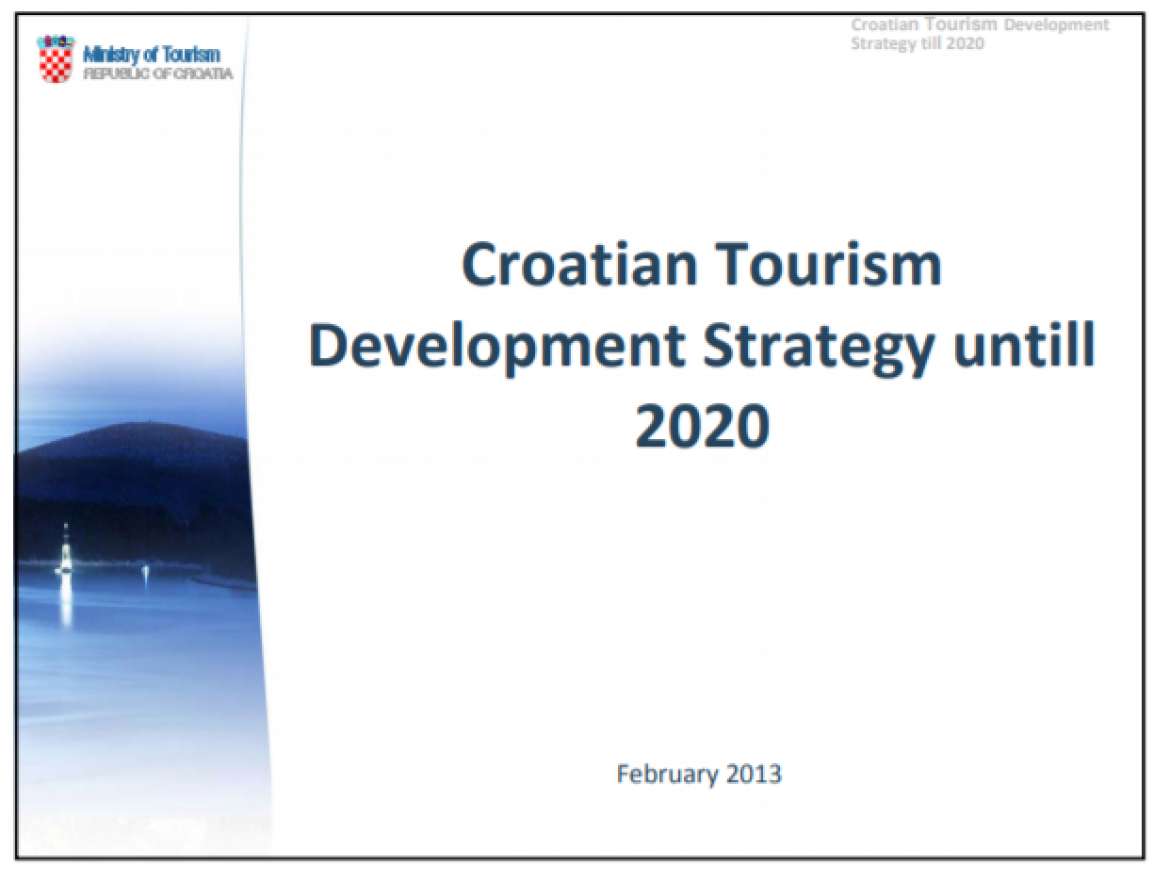
(perhaps the spelling on official documents has improved since 2013 to make Croatia more globally competitive in tourism)
As Croatia prepared to enter the EU in July 2013, the Croatian National Tourist Board ran a campaign called Croatia - the New Tourism Star of the EU, as you can see from the video above.
So how is it going, six years later, after six years of concerted effort by the Ministry of Tourism to deliver on its key development goal of establishing Croatia in the world's top 20? Has Croatia truly become the new tourism star of the EU?
Er... not quite.
With over 20% of its GDP, mostly due to the sun and the sea, due to tourism, the new tourism star of the EU finds itself in 14th place currently, out of 28 EU countries.
The good news is that Croatia should jump to 13th position at the end of next month if Boris delivers on his do or die promise to take the UK out of the European Union.
It is behind its main regional competitor, Greece, the mighty tourism powerhouse of Luxembourg, as well as Belgium, but has managed to get ahead of Finland.
Innoguide Experiential BE from Copper Views on Vimeo.
Ah, the mention of Belgian tourism, not something I get to write about often. But perhaps part of Belgium's success is due to the fact that it provides authentic and innovative content, often out of nothing. I will be forever grateful to Iva Silla of Secret Zagreb for presenting this great video at a conference in Zagreb a few years ago - how a Belgian town took advantage of its pig tradition and nickname to turn it into a tourism attraction. Check out the innovative (and popular!) pig walking tours of Belgium above.
I should point out to be clear that this measure of success is not something I am choosing to fit my narrative, rather one that the Ministry asked to be judged on, and one which the Croatian National Tourist Board is claiming as a big success.
To miss the number one stated goal for tourism development by such a wide mark, and to boast of such success when you are 14th out of 28 of a community where tourism is not the most important industry in most of the other member countries, is a little bit odd. At least to this Brit, but then what would I know?
This obsession with numbers - record arrivals, record overnight stays - makes little sense to me or many others I discuss tourism with, but if we have to deal with the currency of numbers, let me ask this.
What is the target number of arrivals?
What is the target number of overnight stays?
Let me explain what I mean. If I have a hotel of 100 beds and I am 60% full in my first year, then 66% in my second year, I have a 10% increase. A 72.6% occupancy in year 3 is another 10% growth. I can't continue to grow indefinitely, and my final goal would be to be 100% full.
Assuming - and I am not convinced of it - that the ministry has a strategy, what is the final goal? How many arrivals are we aiming for? 20 million? 30 million? 4 billion? Does anyone know? And how are these targets spread by month? If we know what we are aiming for, it would be a lot easier to understand.
Similarly, what is the target number of overnights, and how does that break down by months? Does anyone know? If yes, in the public interest, can we have this in the public domain?
Presumably, if there is a strategy, we also have a target number of hotel beds and private accommodation beds? Can we publish these as well, so that we all know what the plan is and what we are aiming for?
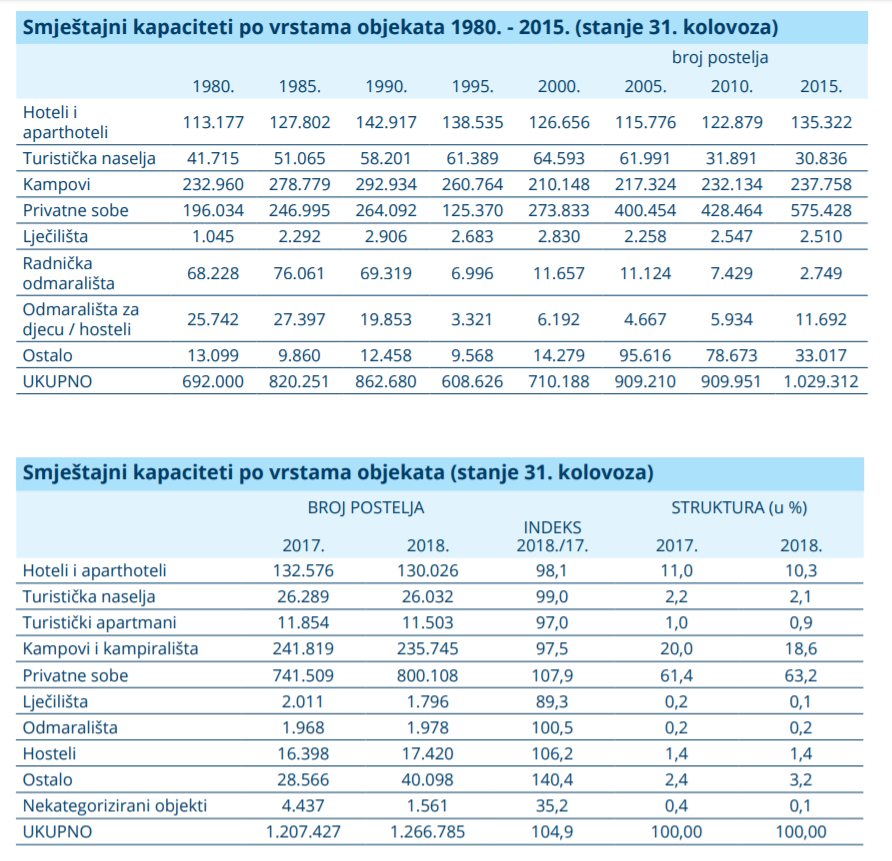
According to those beloved official statistics (these provided by the Croatian National Tourist Board, above), Croatia had 11 million more tourists in 2018 than in 1990. It also had 54 million MORE overnights, despite having 9% LESS hotel beds. And private accommodation beds rose from 267,000 to 800,000 in the same period.
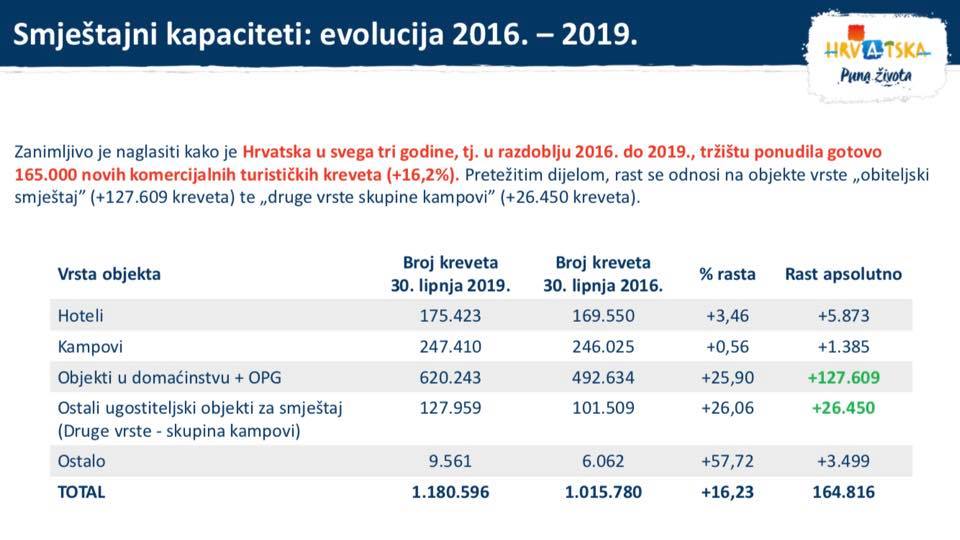
However, if you rely on the official statistics I got from the Ministry of Tourism (the chart above), Croatia has only 620,000 private beds, some 180,000 fewer than the Croatian National Tourist Board is claiming. Both are official statistics - good to know we are basing our entire success on statistics and we can't even officially decide which numbers we are working with...
At the beginning of the summer, the addition of 127,000 extra private beds in the last three years was being trumpeted as some kind of official tourism success, but by the end of it, it was explained to us that the focus now is to reduce the number with only the quality ones surviving.
If there truly is a strategy, can we a) agree between the ministry and the tourist board what the real numbers are (we currently have a 22.5% discrepancy in number of private beds, for example) and then explain to us mere mortals what the strategy and target numbers are.
And finally - and this is a really big one - we need a LOT more transparency on the issue of infrastructure. 19.5 million tourists in 2018 versus 8.5 million in 1990 is a huge increase, and I doubt many would claim that investment into the infrastructure has kept pace with that. Indeed, increasing reports of sewage in the sea would seem to point this out in an alarming fashion. How is infrastructure keeping pace with tourism growth, and what strategies exist for this?
Croatian tourism CAN continue to grow, but not in the current format. The reliance on seasonality has to end, as does the obsession with numbers. And the threat of devastation to the coast and Adriatic has to be reduced. As mentioned before, rather than just criticising, here are 5 concrete ways that Croatia should develop its tourism with less pressure on numbers and the environment.
As for the statistics, I doubt I am the only one who is as confused as ever.
Days of Croatian Tourism 2019 Programme: Will Hedonists #HeadOnEast to Slavonia?
September 11, 2019 - Days of Croatian Tourism 2019 will take place in Slavonia next month - the full programme has just been published by the Ministry of Tourism.
I am not sure how to describe the Days of Croatian Tourism annual event, which takes place in October each year. It is certainly full of pomp, with the awards ceremony broadcast on live television. The event is like a who's who of the movers and shakers in Croatian tourism, and it is usually held in one of Croatia's top destinations. Apart from being a pretty backdrop to the occasion, it is also a chance for tourism officials to decamp to a top destination on the coast away from Zagreb for a few days of relaxation and 'work'. Last year's event in Hvar Town was VERY well attended.
I am curious to see how many of those same official workers come for the entire event at Days of Croatian Tourism 2019. After pressure from several quarters, the government seems to be taking more of an interest in Slavonia, and this year's event will take place in Slavonia. A gorgeous region with so much potential, but without the 4 and 5-star relaxation of more developed coastal destinations.
And the programme looks great (at least for those who can read Croatian - would it be too much trouble to provide an English version for those interested? If nothing else, it sets a good example for Croatian tourism in general). I really like the slogan - HeadOnEast for Hedonist - and there is plenty to see in the three-day event. Virovirica, Slavonski Brod and Vukovar on Day 1, Slavonski Brod, Pozega, Kutjevo, Papuk Nature Park and Jankovac Park, Osijek and Vinkovci on Day 2, and a full day in Osijek on Day 3. Full programme in Croatian below.
HTZ Announces 5% Increase in Tourist Arrivals from January to August 2019
September 10, 2019 - The Croatian Tourist Board, also known as HTZ, announces the tourism numbers for the first eight months of 2019.
According to the eVisitor system, from January to August, Croatia recorded 16.5 million arrivals (+5 percent) and 90.1 million overnight stays (+2 percent). Foreign tourists achieved 14.7 million arrivals (+5 percent) and 79.1 million overnight stays (+1 percent), while domestic tourists recorded an increase of 10 percent in arrivals and 7 percent in overnight stays.
"The first half of 2019, as well as the previous two peak months, July and August, are in line with our expectations and plans this year. In total, since the beginning of the year, we have achieved five percent more tourist arrivals and two percent more overnight stays. But apart from tourist traffic, what particularly delights us is the positive financial results. Namely, according to the Tax Administration, since the beginning of the year, a total of HRK 20.6 billion was realized in providing accommodation and food and beverage services, which represents an increase of 8 percent or HRK 1.6 billion,” said Minister Gari Cappelli, adding that these results are an excellent announcement for the overall results of tourism revenues in 2019.
"After a successful peak season, we are entering the post-season, for which we launched campaigns in 14 European markets in mid-August. In September and October, we expect a repeat of last year's figures or, depending on the market, a further increase in the number of arrivals and overnight stays, primarily from the far-away markets of the US, China, and Korea, but also from Russia and France. Also, very intensive preparations are underway for the next tourist year,” said HTZ director Kristjan Stanicic, adding that the strength of Croatian tourism is confirmed by the latest report of the World Economic Forum, according to which Croatia is ranked 27th in terms of tourism competitiveness, which is an improvement of five-places compared to 2017.
During the first eight months of 2019, the highest number of overnight stays were recorded in Istria (24.3 million), Split-Dalmatia County (16.9 million overnight stays), and Kvarner (16.2 million overnight stays). Zadar County follows with 12.9 million overnights and Dubrovnik-Neretva County with 7.2 million overnights. Sibenik-Knin County recorded 6.2 million overnights, while Lika-Senj County recorded 3 million overnights. Zagreb achieved 1.7 million.
In continental Croatia, not including Zagreb, 840,000 arrivals (+8 percent) and 1.7 million overnight stays (+8 percent) were recorded, while in the counties, the most overnight stays were recorded in Karlovac (511,000), Krapina-Zagorje (258,000), Zagreb (157,000), Osijek-Baranja (145,000) and Međimurje (144,000).
At the national level, during the first eight months, most overnight stays were recorded from the markets of Germany (17 million), Slovenia (9.5 million), Austria (6.3 million), Poland (5.4 million), Italy (4.9 million), the Czech Republic (4.7 million) and the United Kingdom (3.5 million). When looking at accommodation, most overnights were recorded in households (34.5 million), hotels (19.4 million), and camps (16.2 million). The top destinations in the first eight months, according to overnight strays, are Dubrovnik, Rovinj, Porec, Split, and Medulin.
In August, there were 5 million arrivals and 33.1 million overnight stays in Croatia, which represents an increase of 8 percent in visitors and 3 percent in overnights compared to August 2018. In August, the most overnight stays were recorded in Istria (8.7 million), while in Kvarner and Split-Dalmatia County, 6.3 million overnight stays were recorded. This is followed by Zadar County with 5.2 million overnights and Sibenik-Knin County with 2.5 million overnights. Dubrovnik-Neretva County recorded 2.3 million overnight stays, while Lika-Senj County achieved 1.2 million overnight stays. Zagreb reached 289,000.
In August, 191,000 arrivals (+8 percent) and 421,000 overnight stays (+6 percent) were made in continental Croatia, of which the most overnight stays were achieved in Karlovac (197,000), Krapina-Zagorje (48,000), Zagreb (36,000), Međimurje (32,000) and Varazdin County (32,000). At the national level, most overnight stays in August were recorded by the markets of Germany (6.5 million), Slovenia (3.3 million), Italy (2.9 million), Poland (2.1 million), Austria (2.1 million) and the Czech Republic (1.7 million).
You can see the HTZ results here.
To read more about travel in Croatia, follow TCN’s dedicated page.

